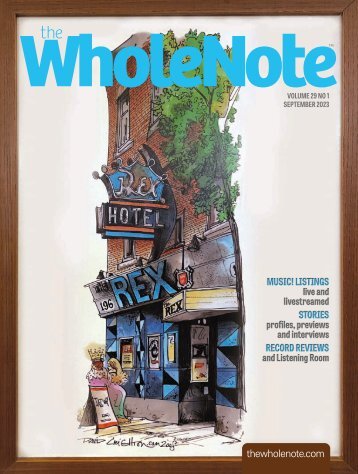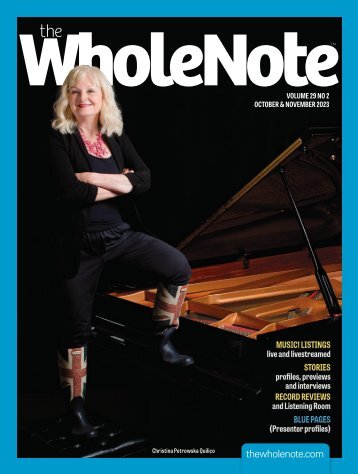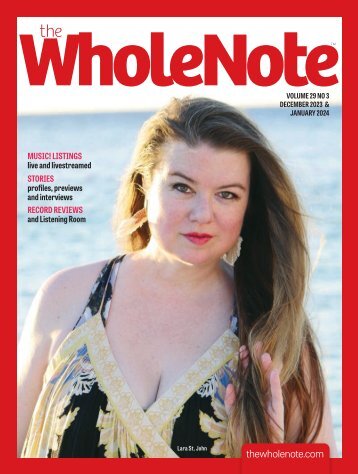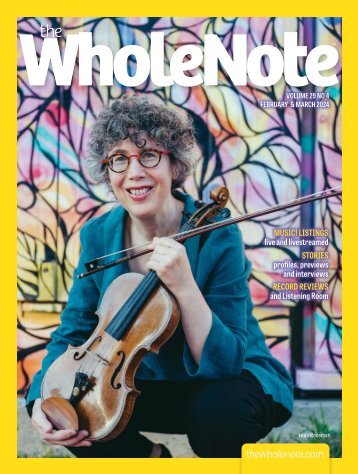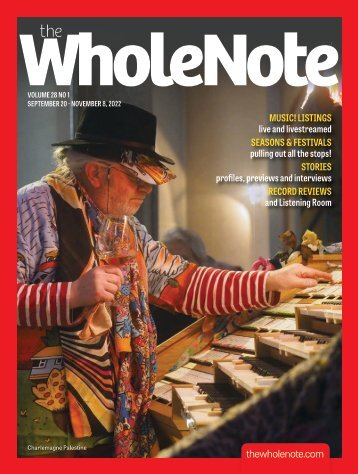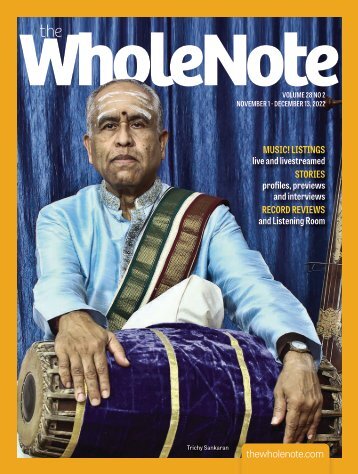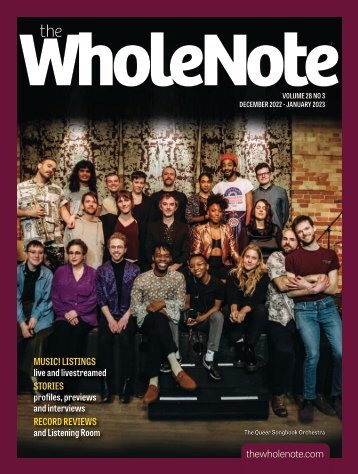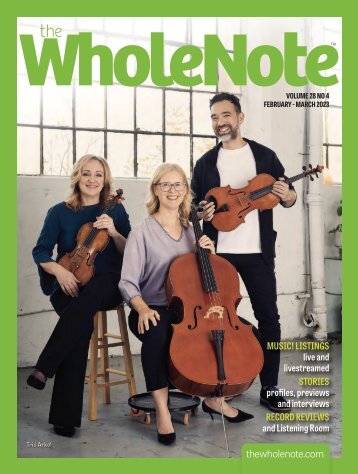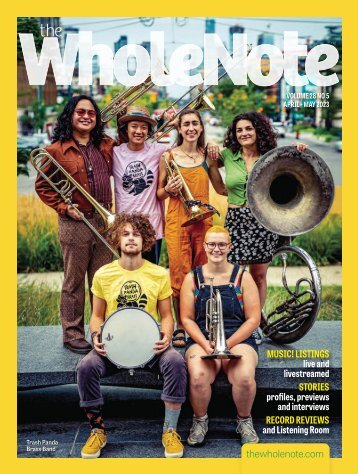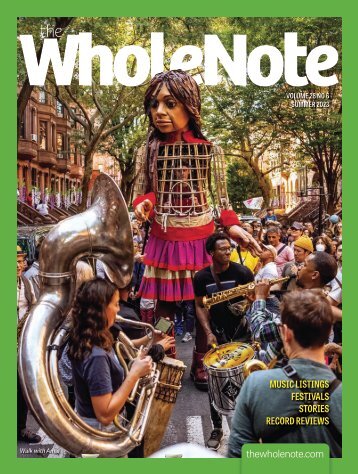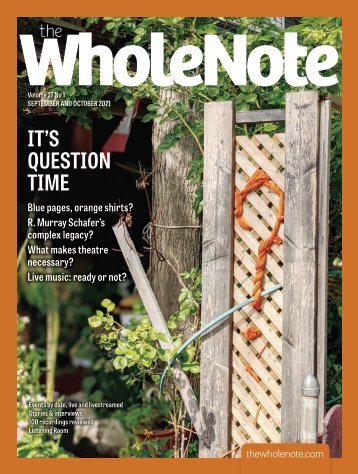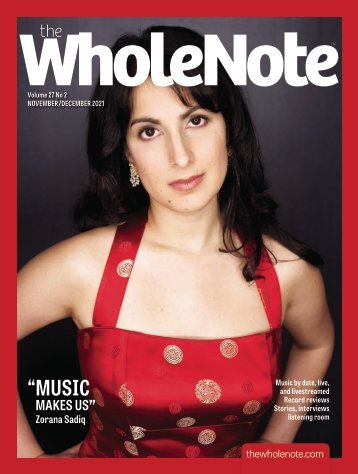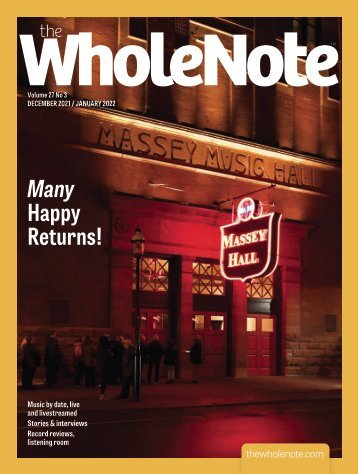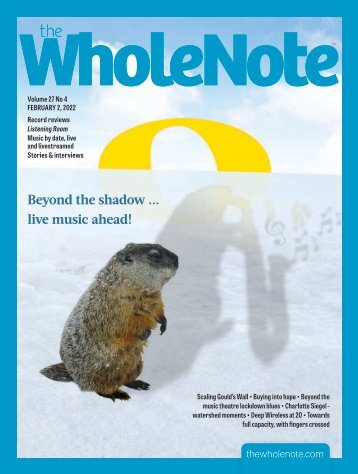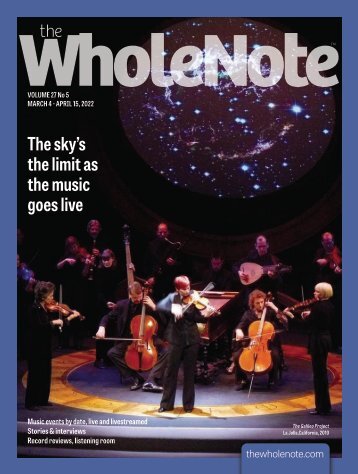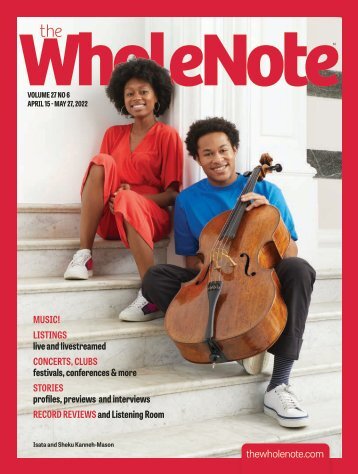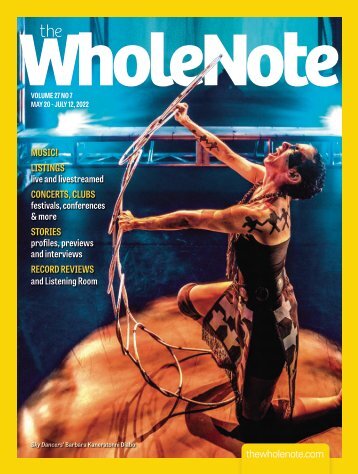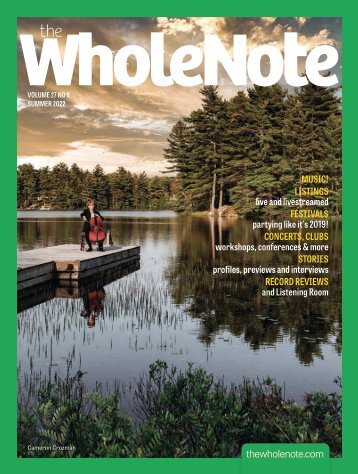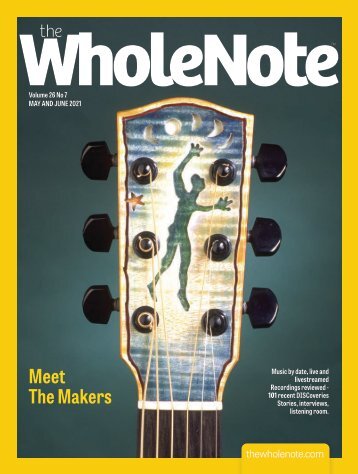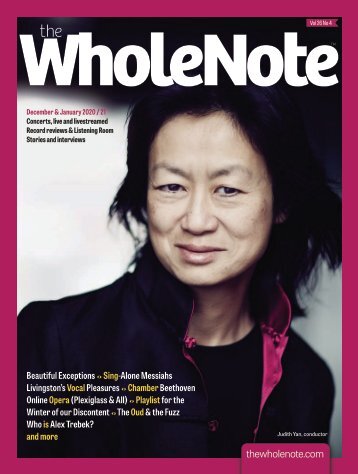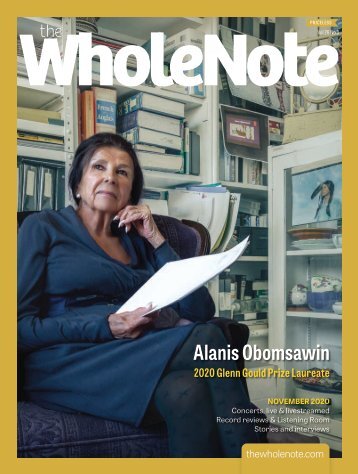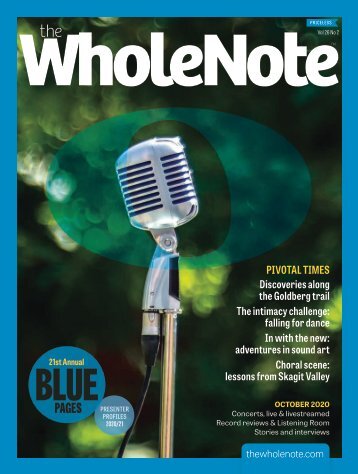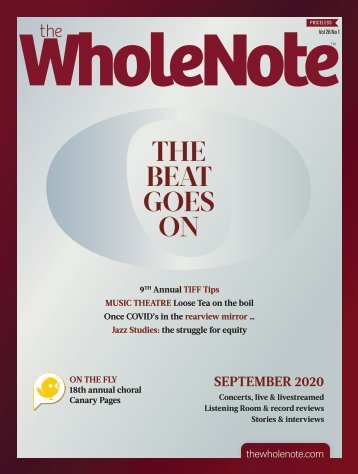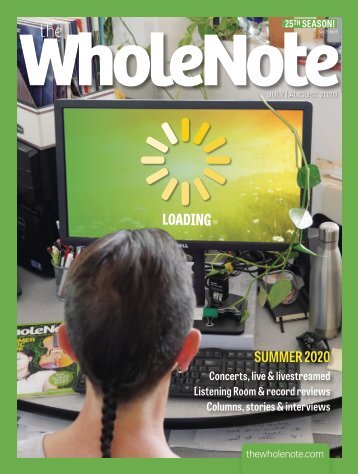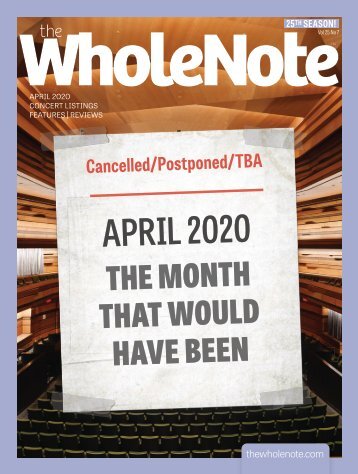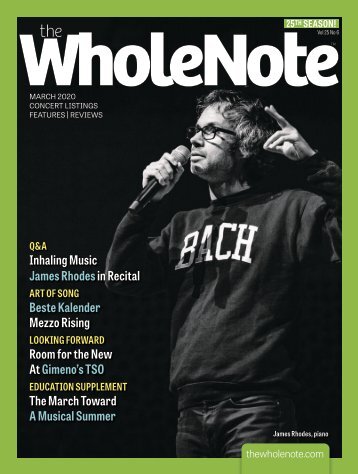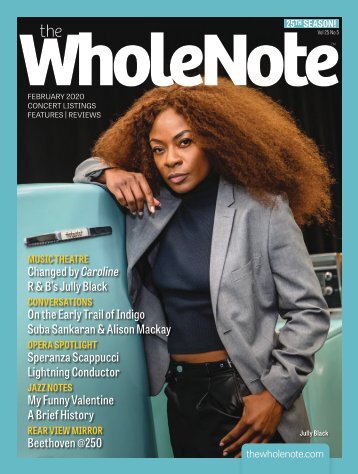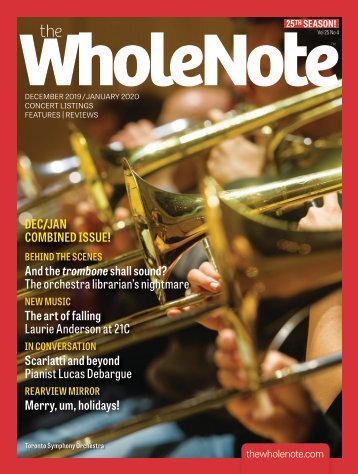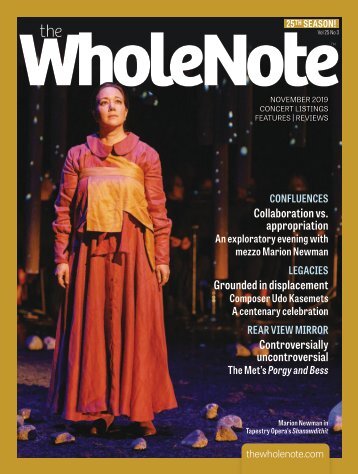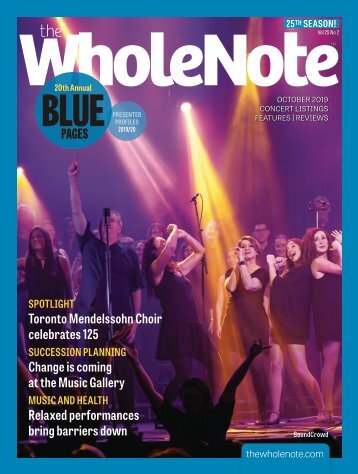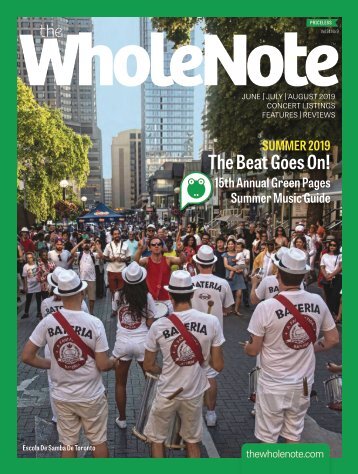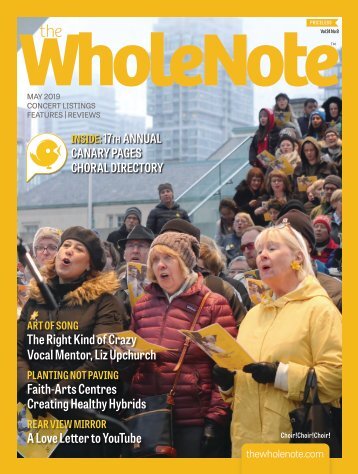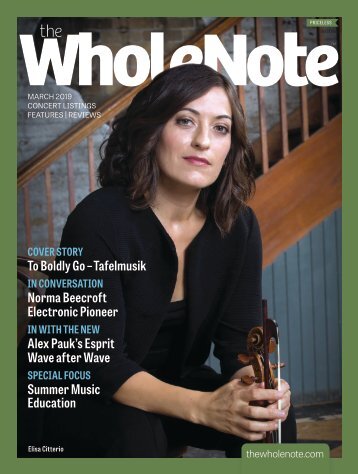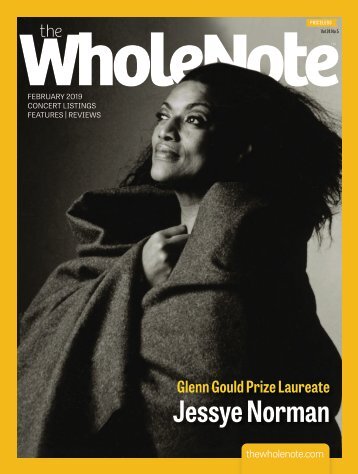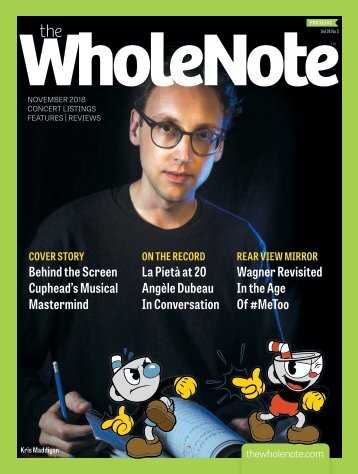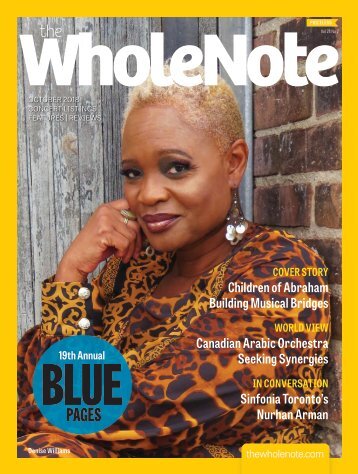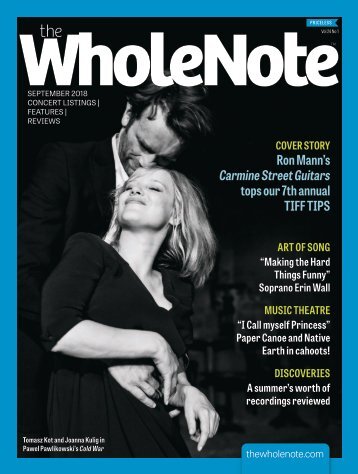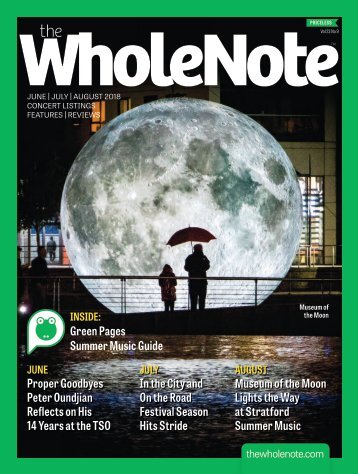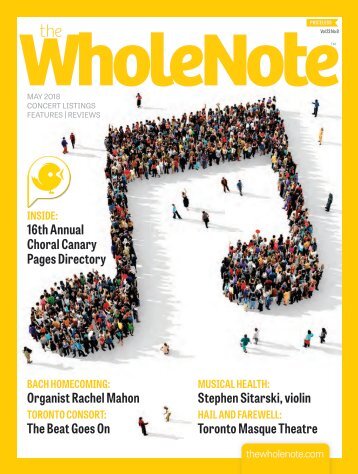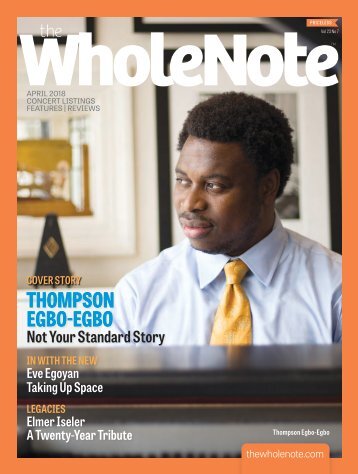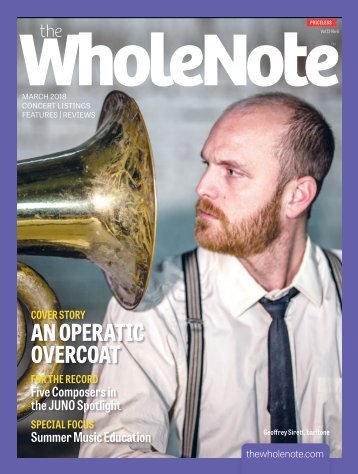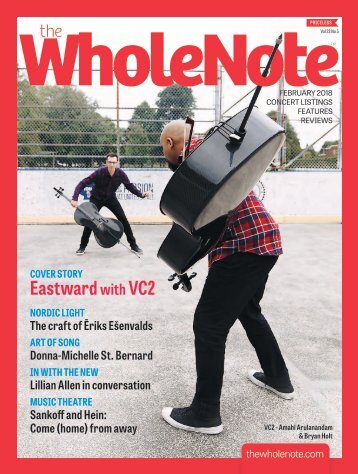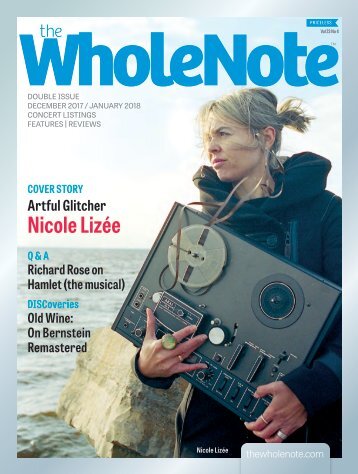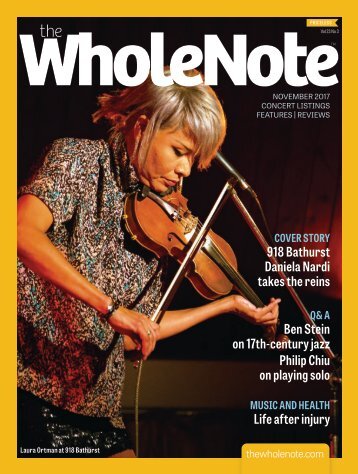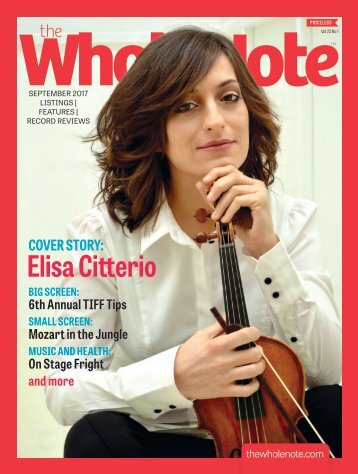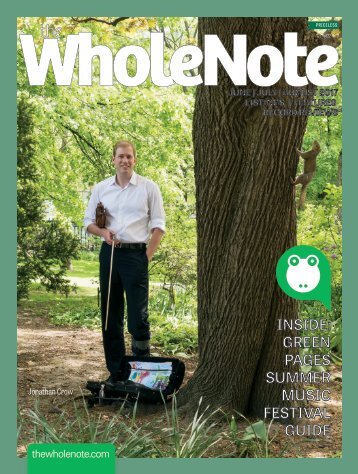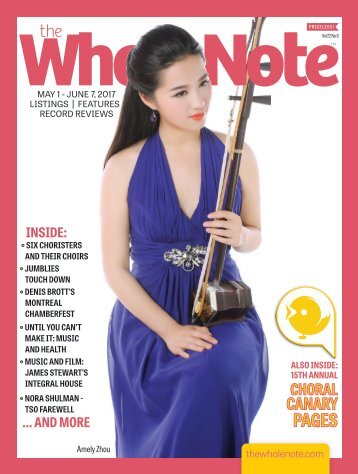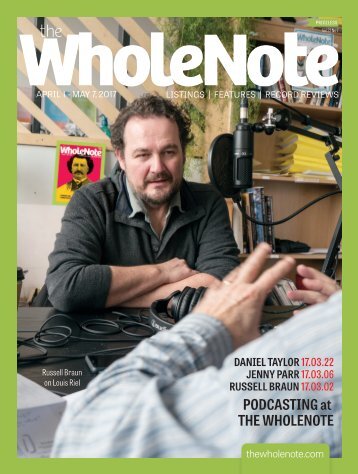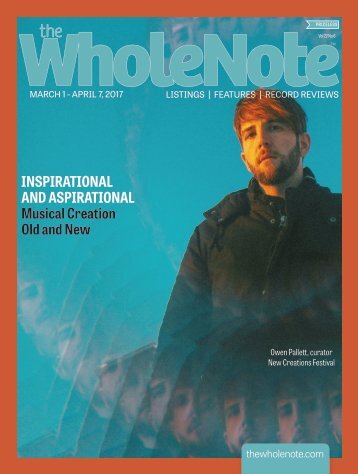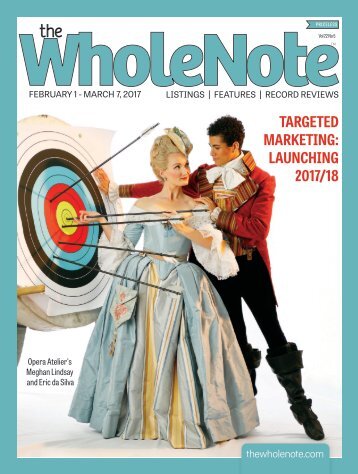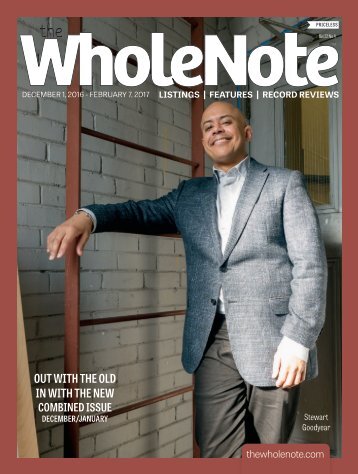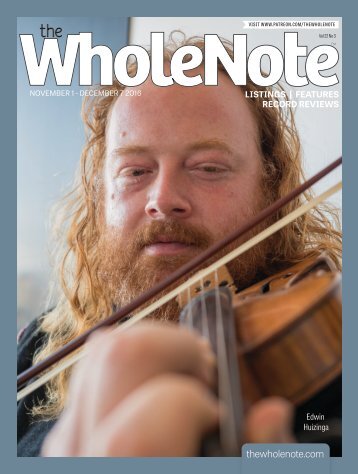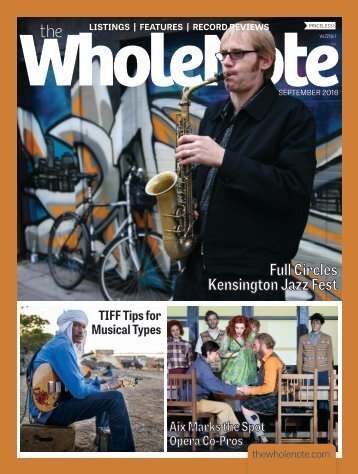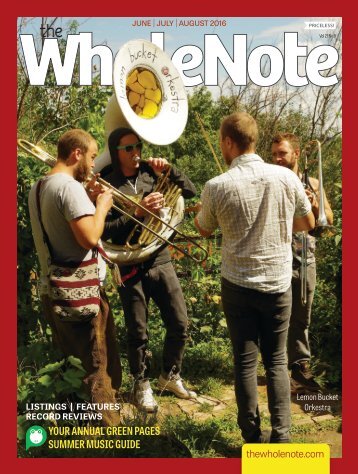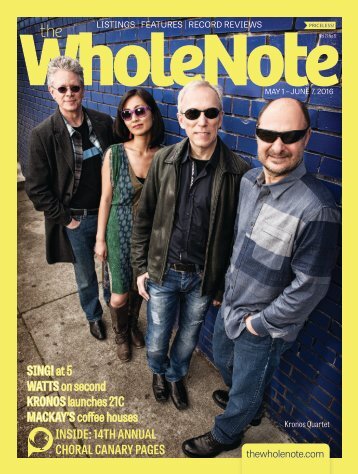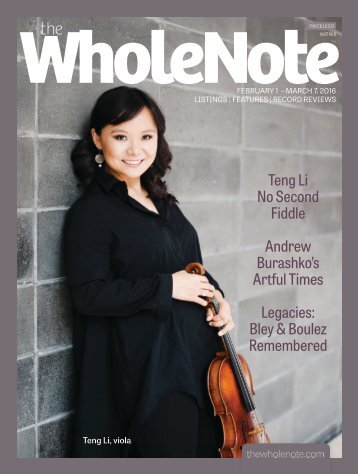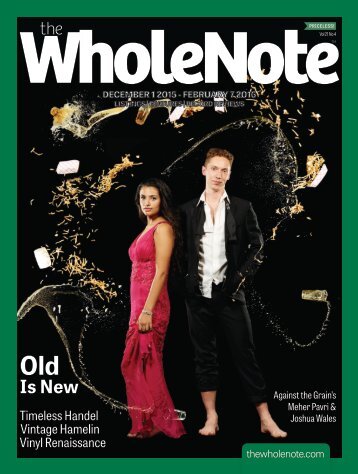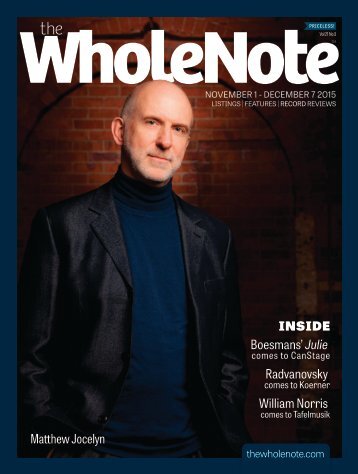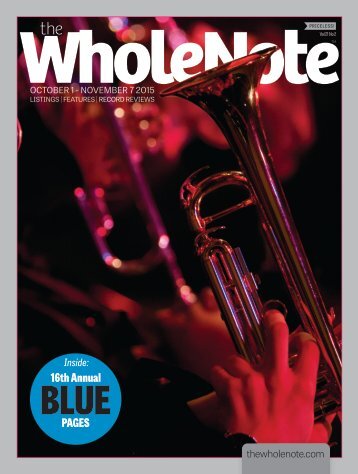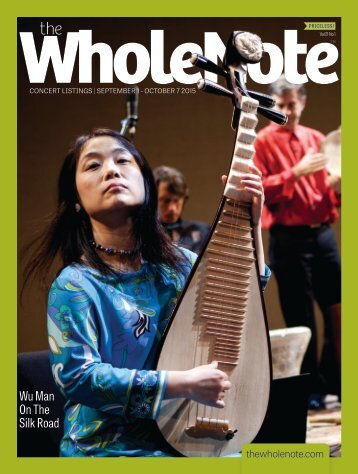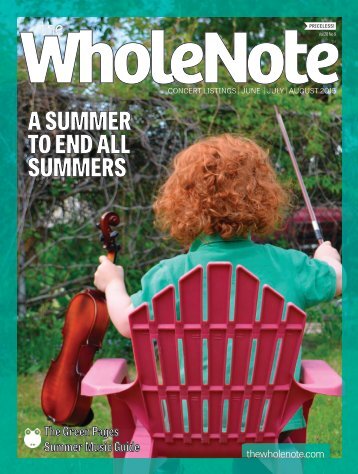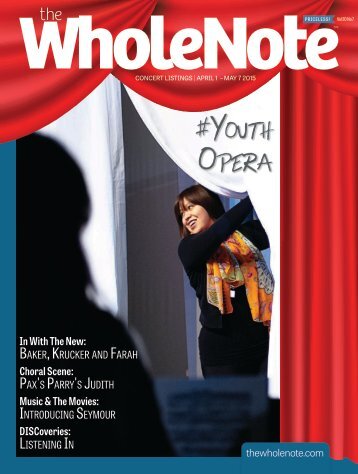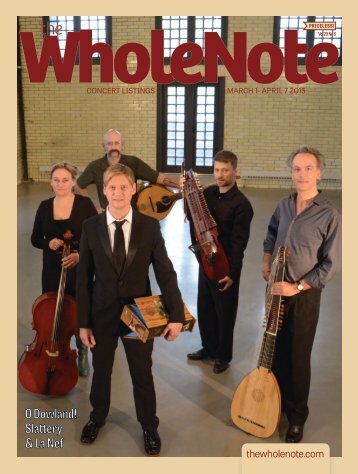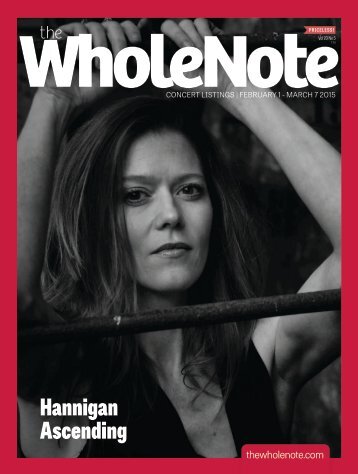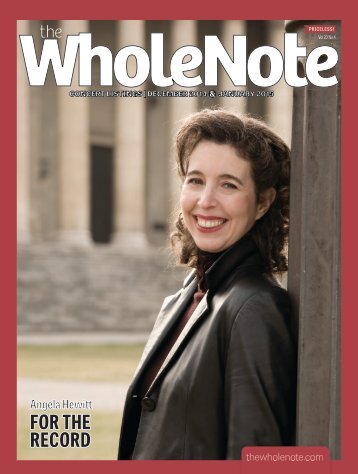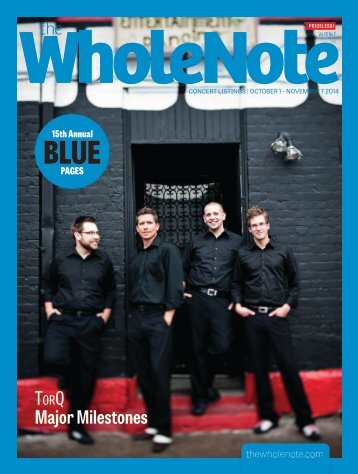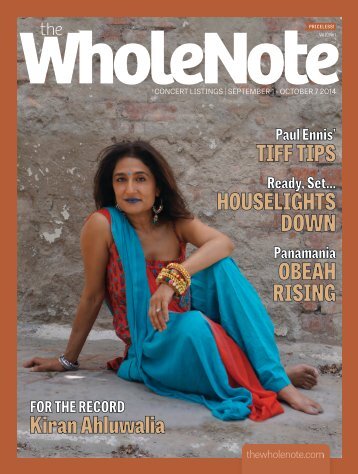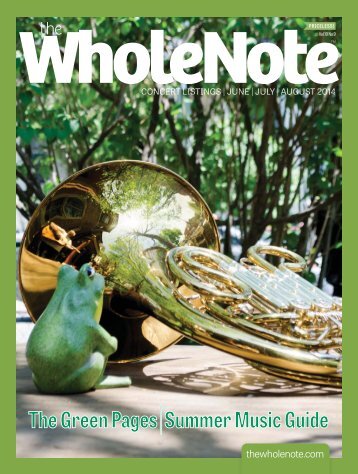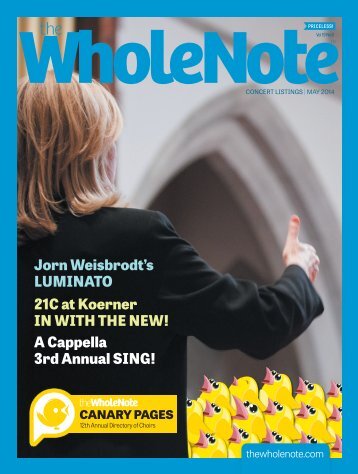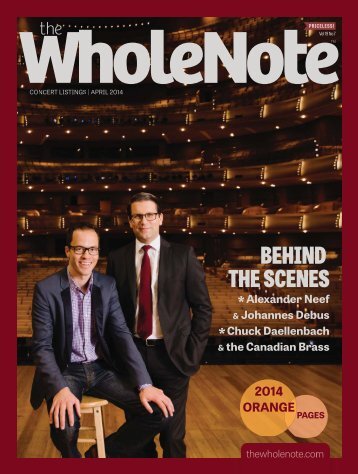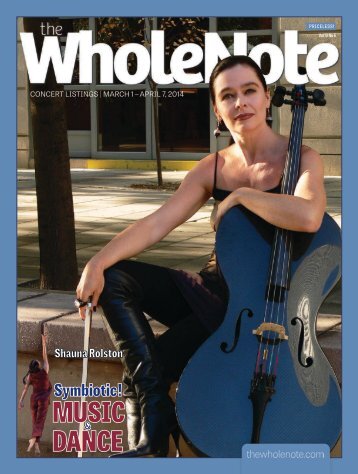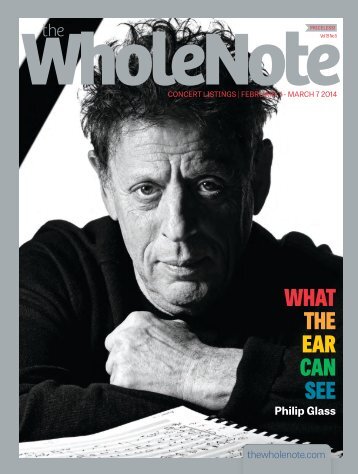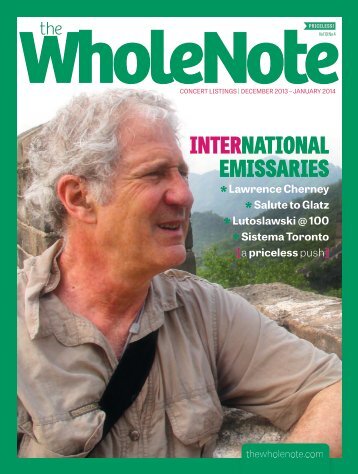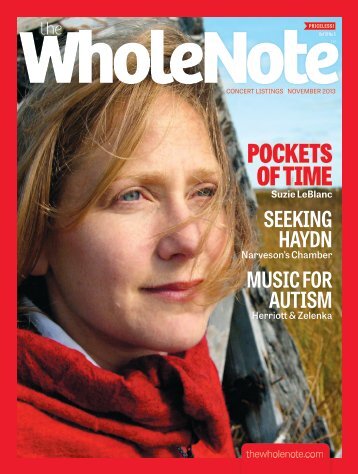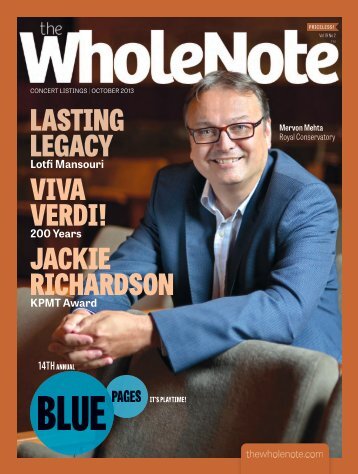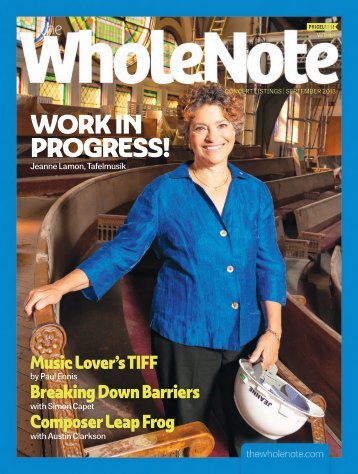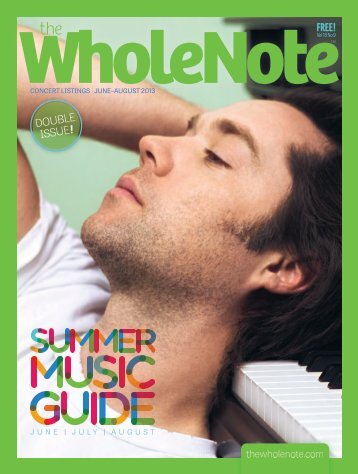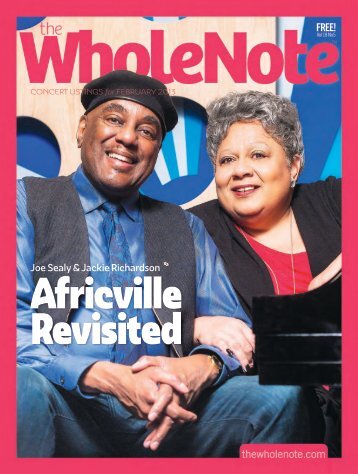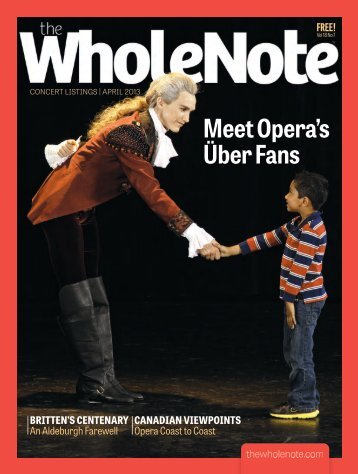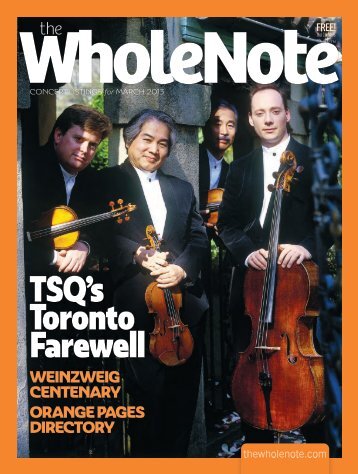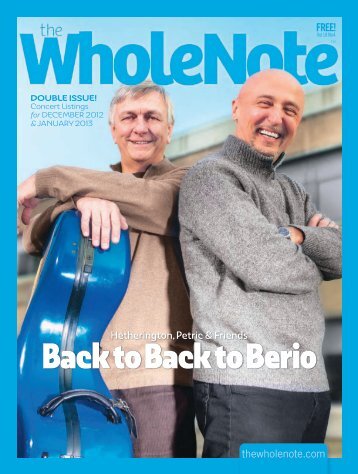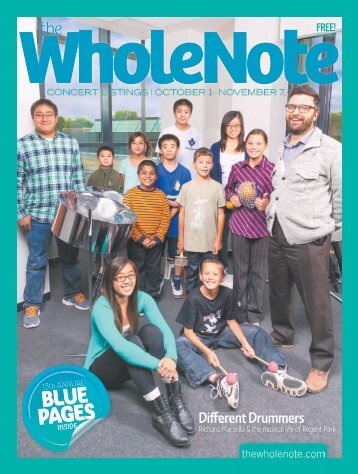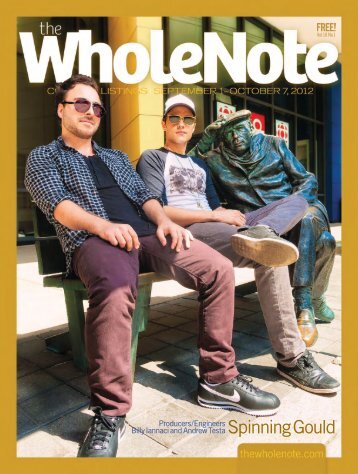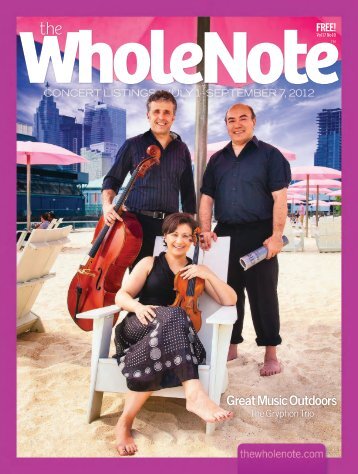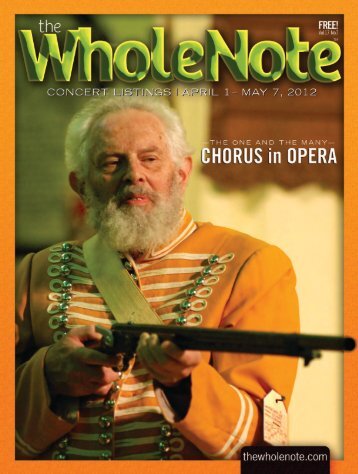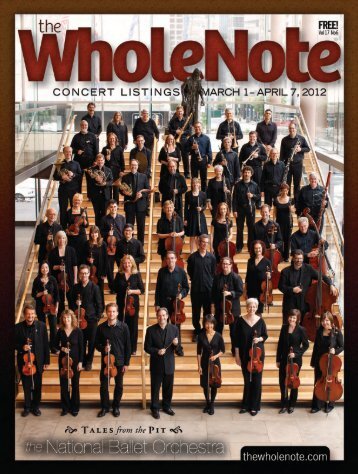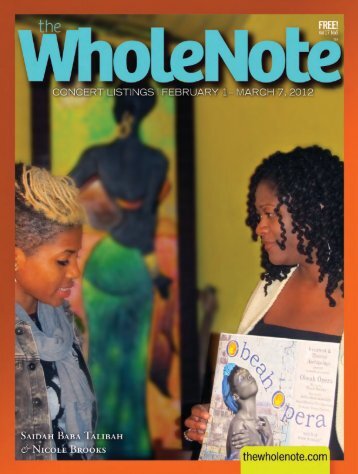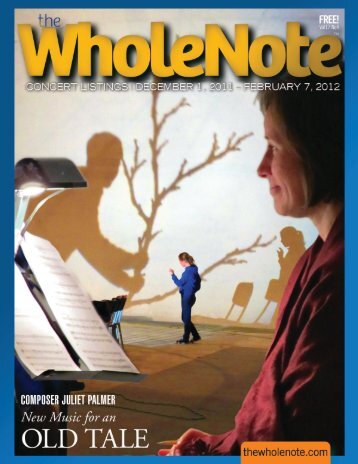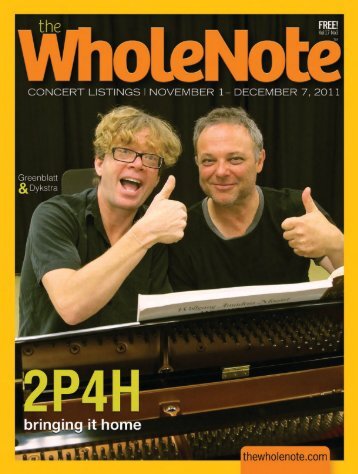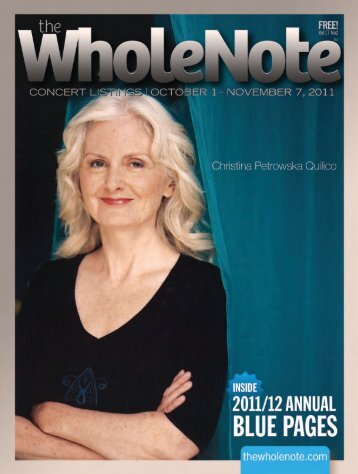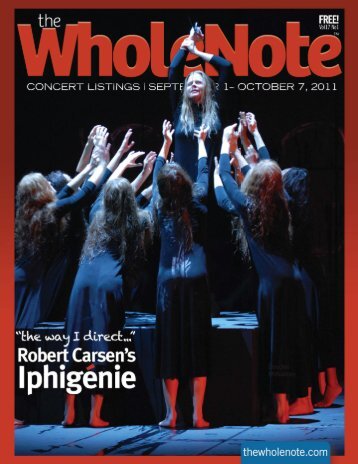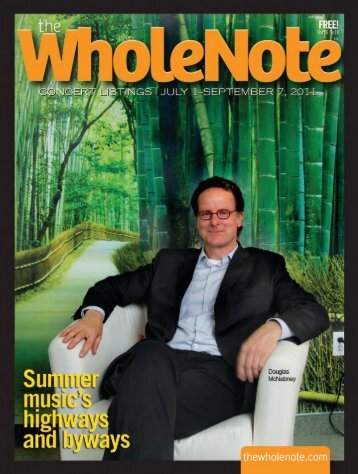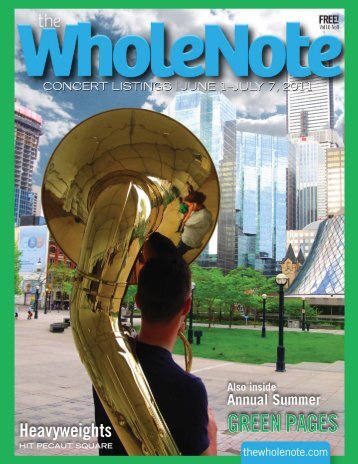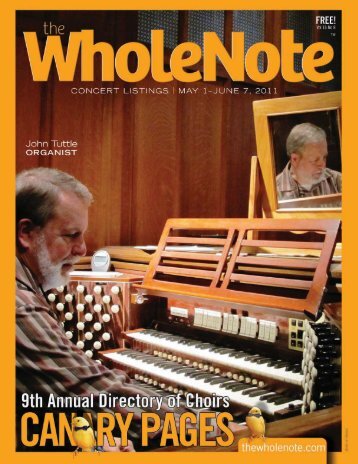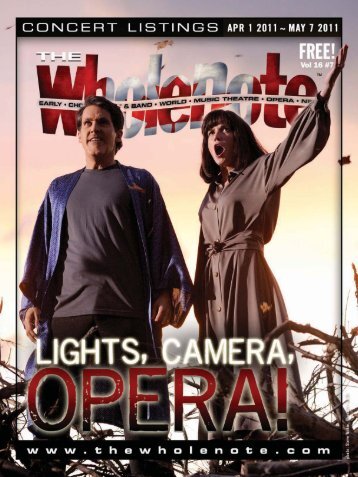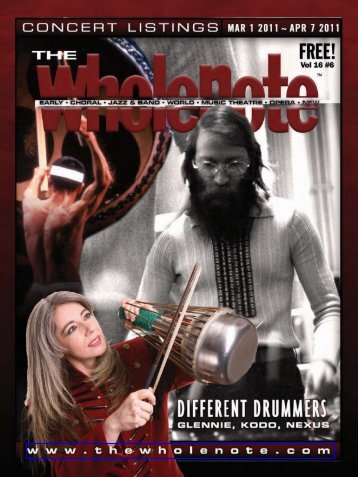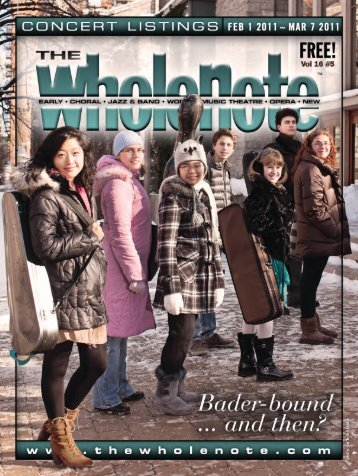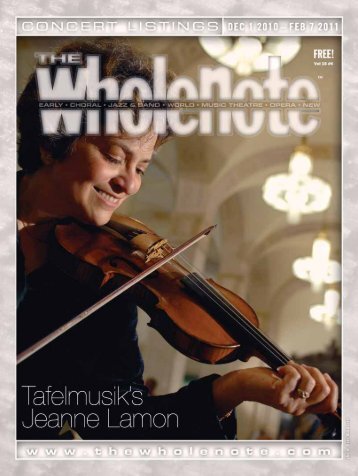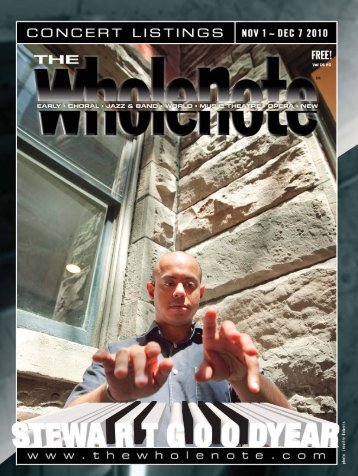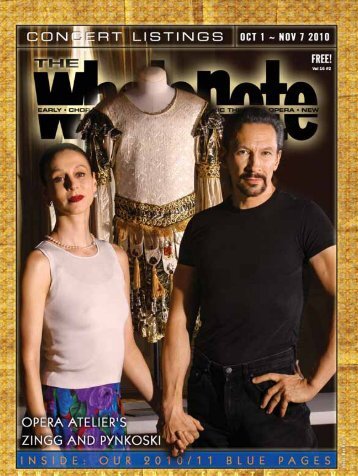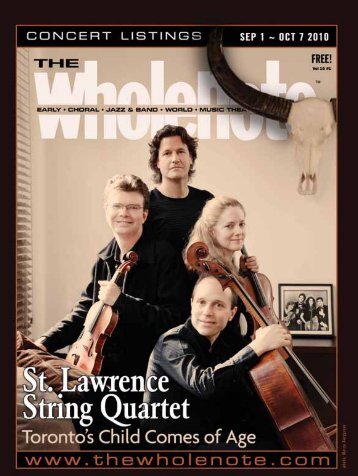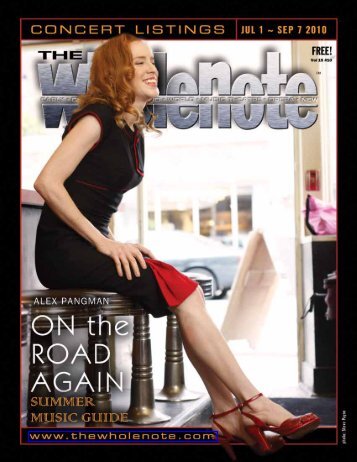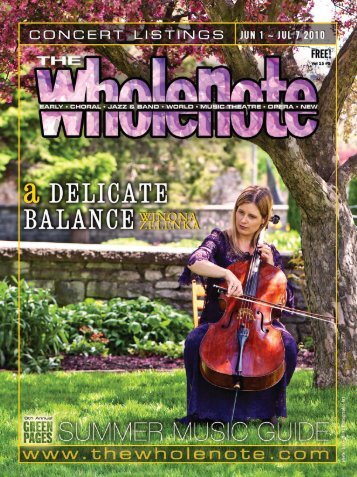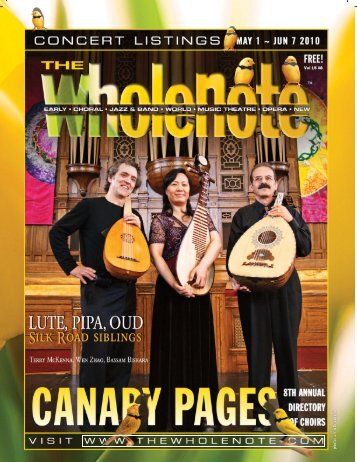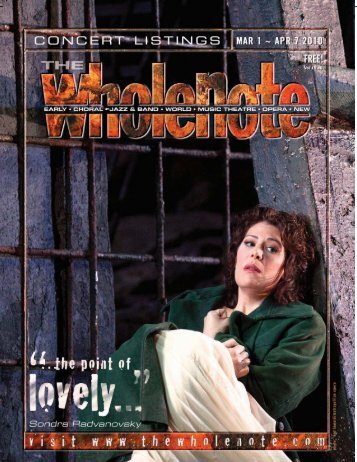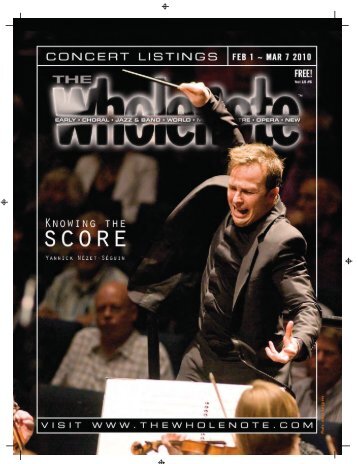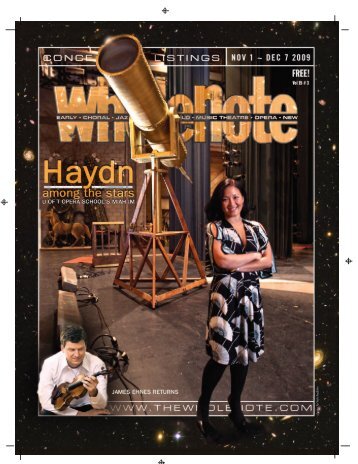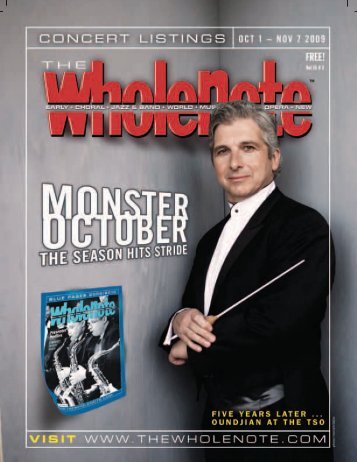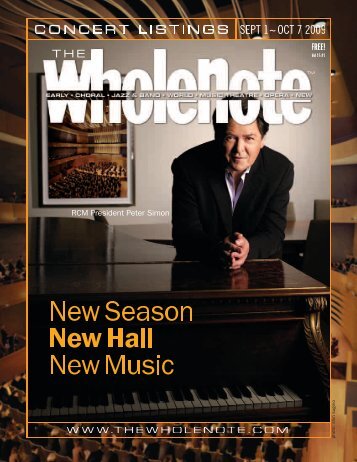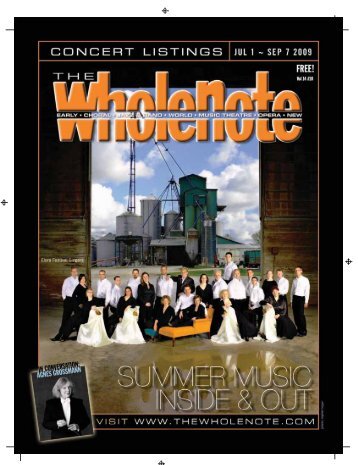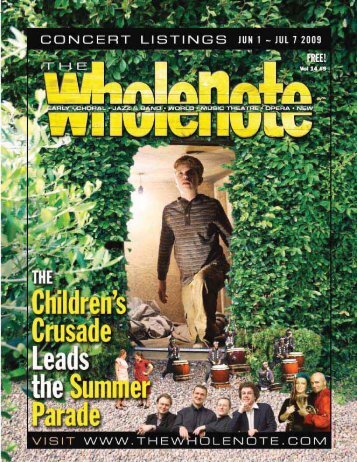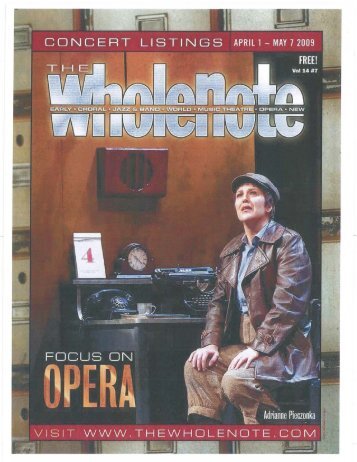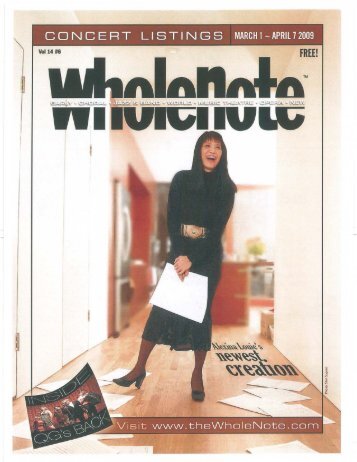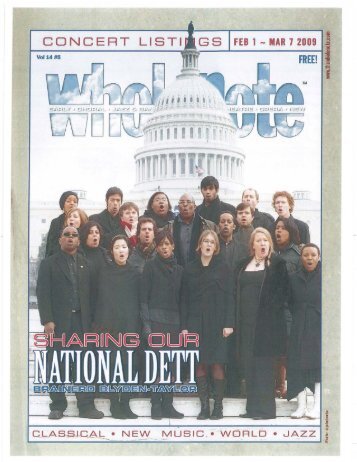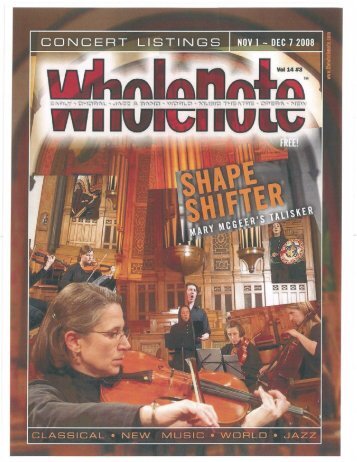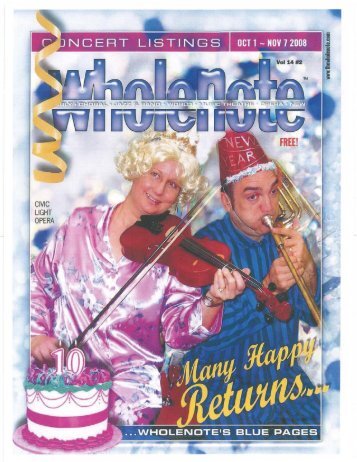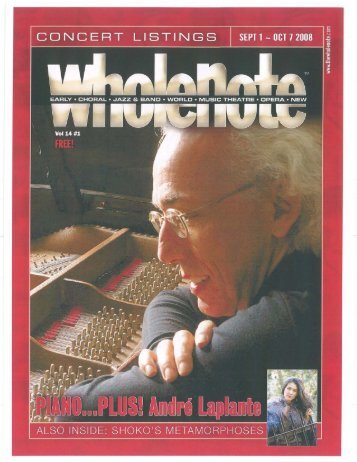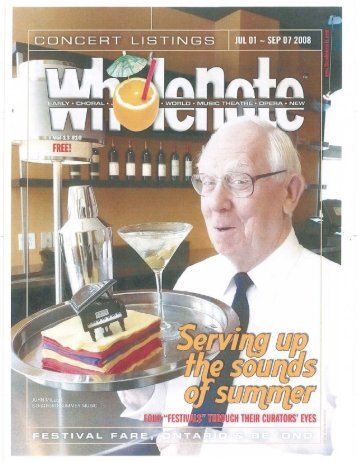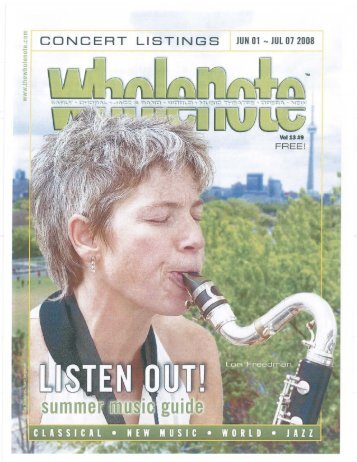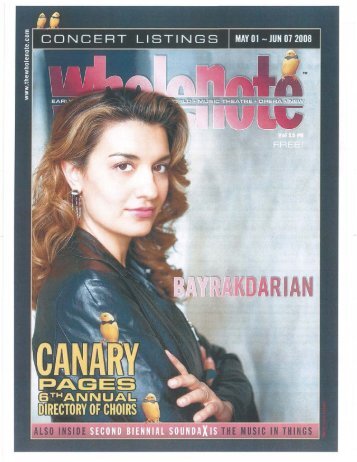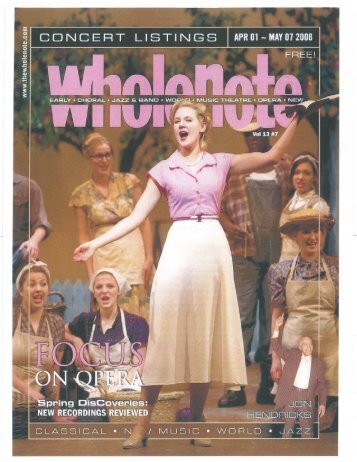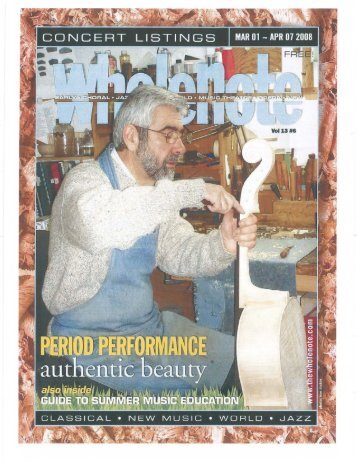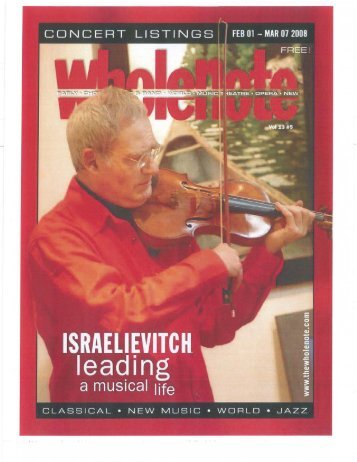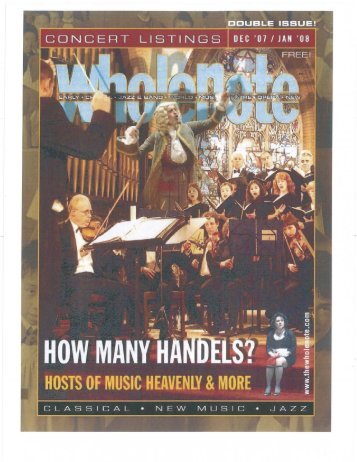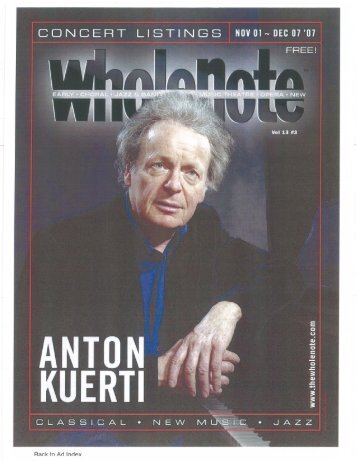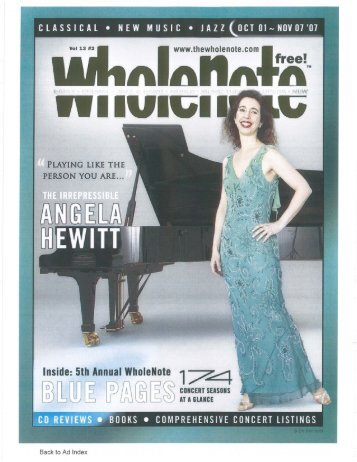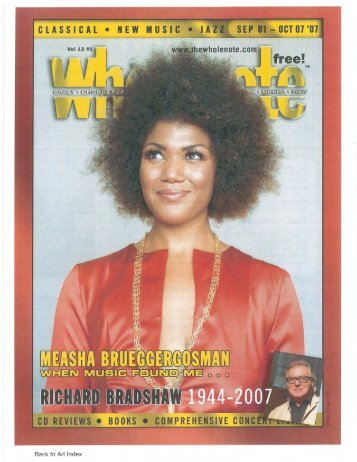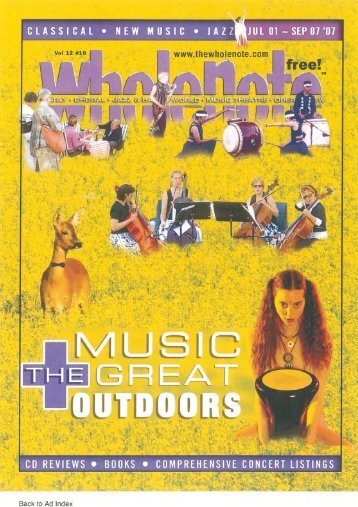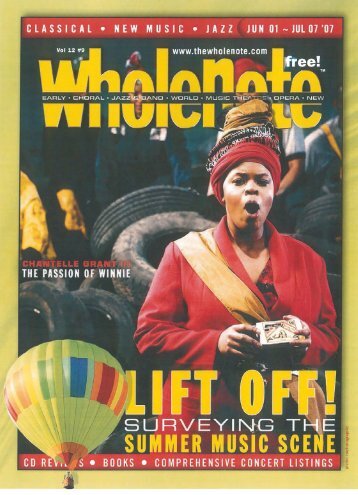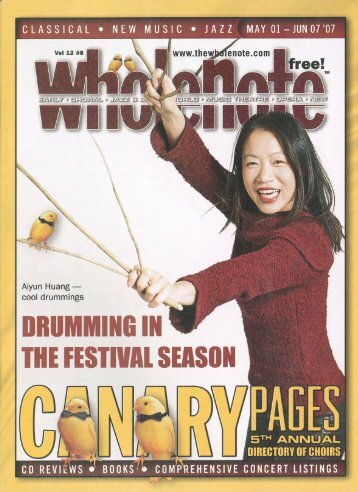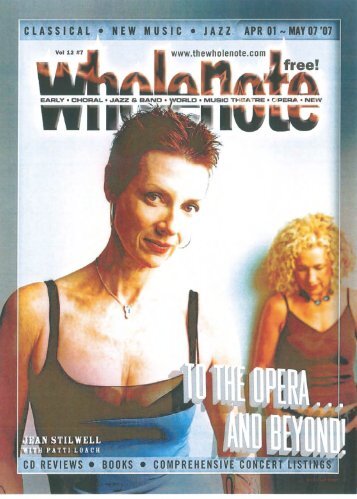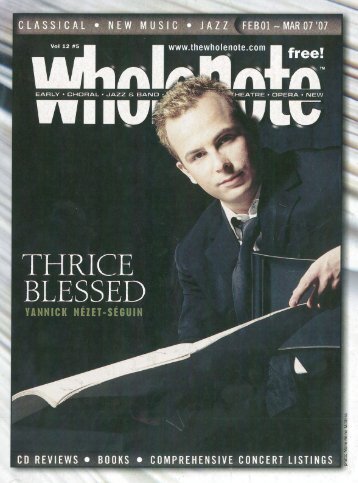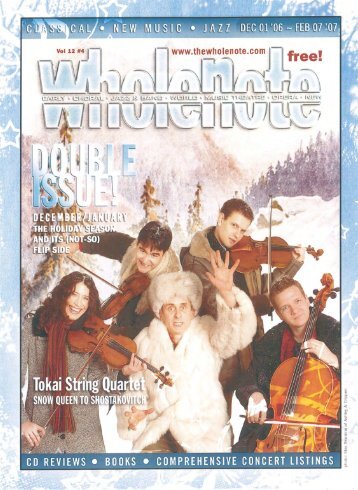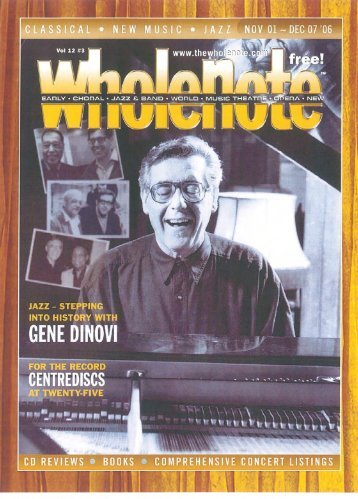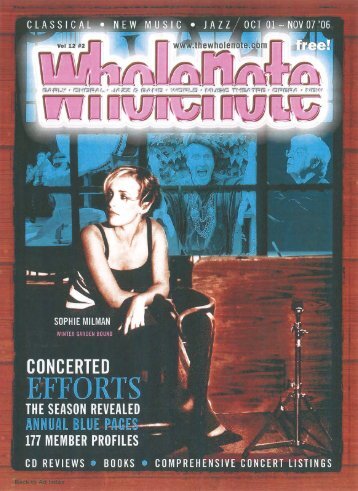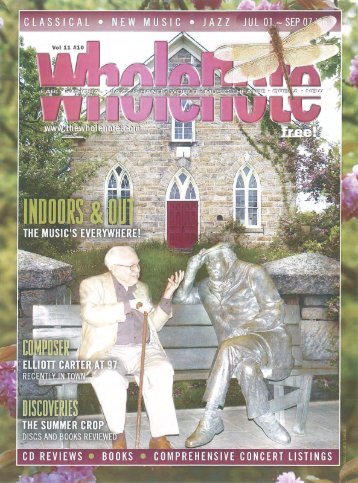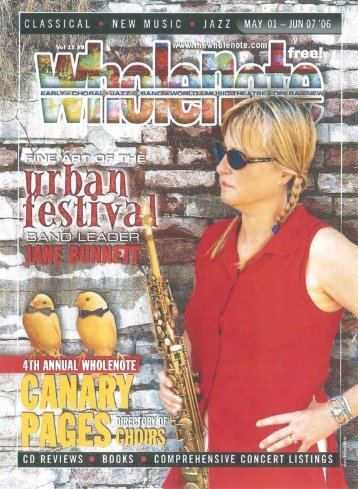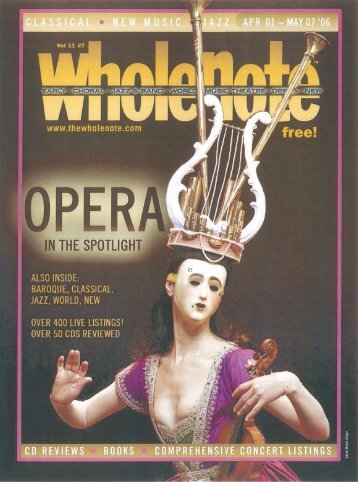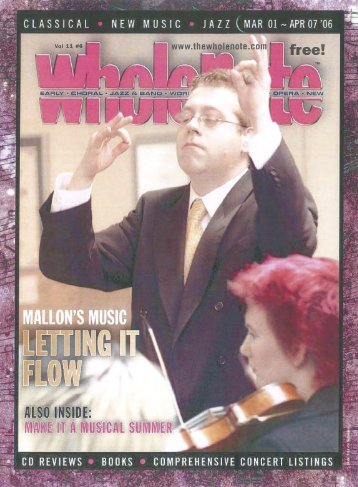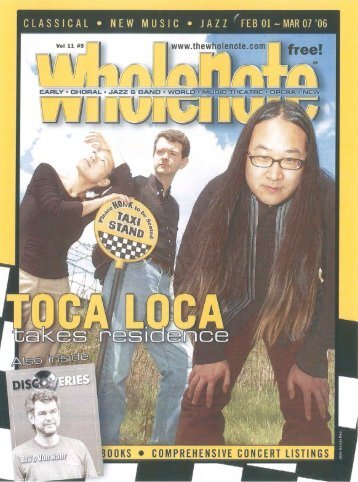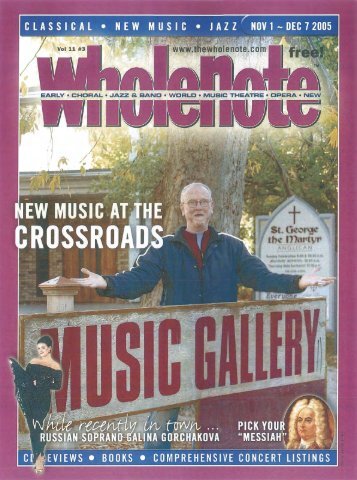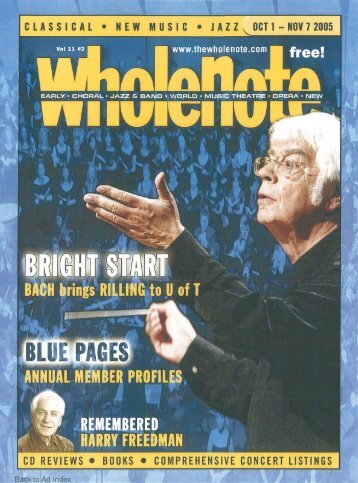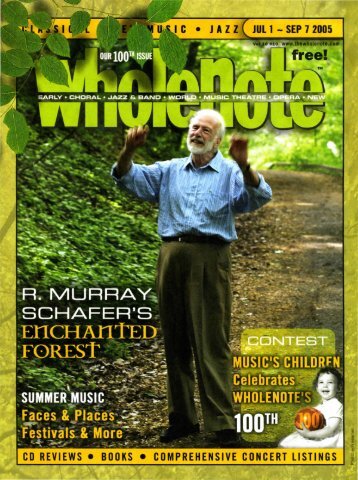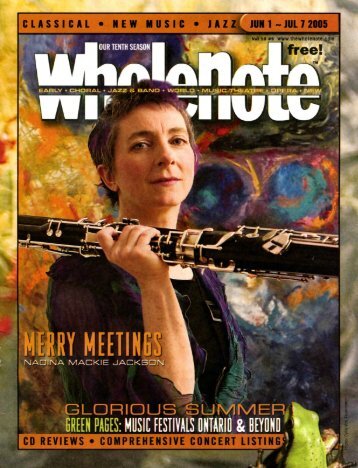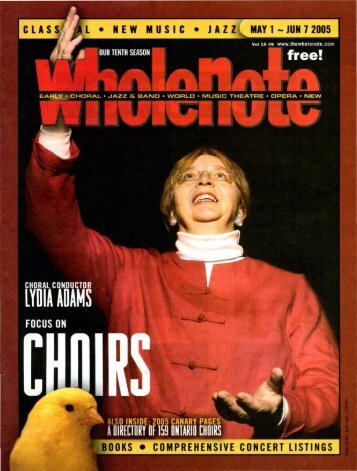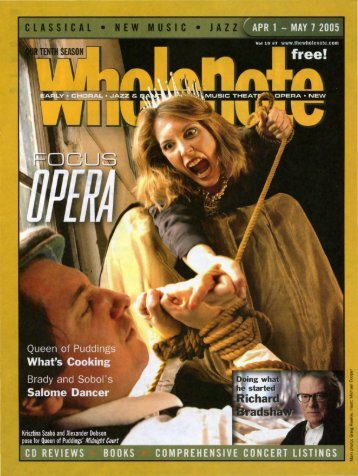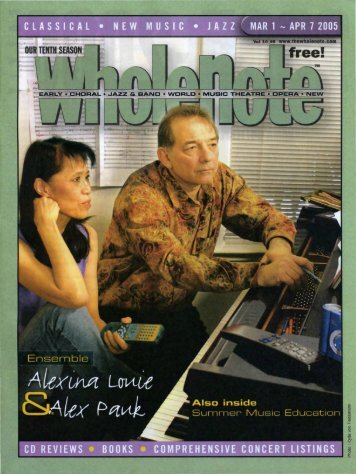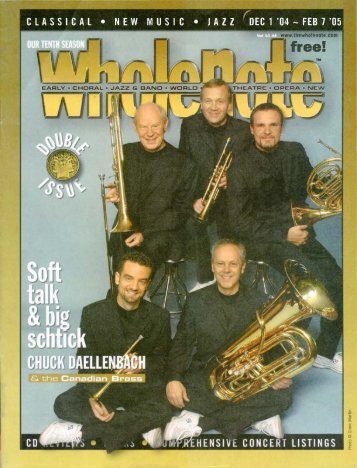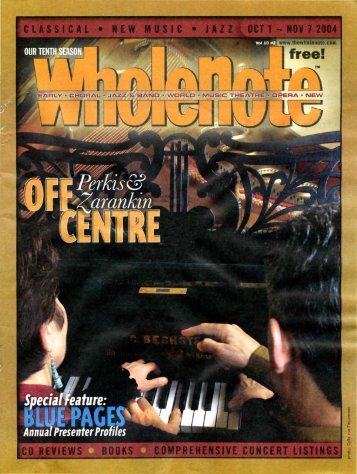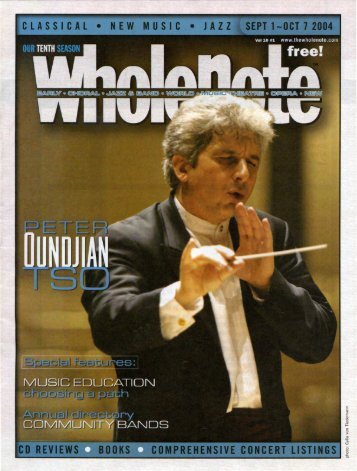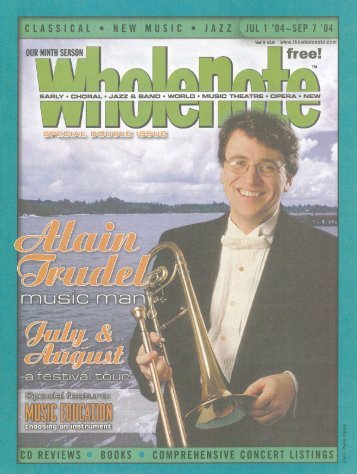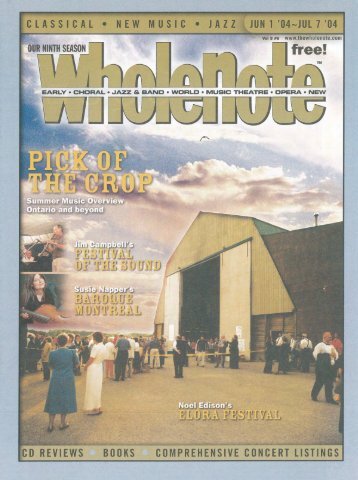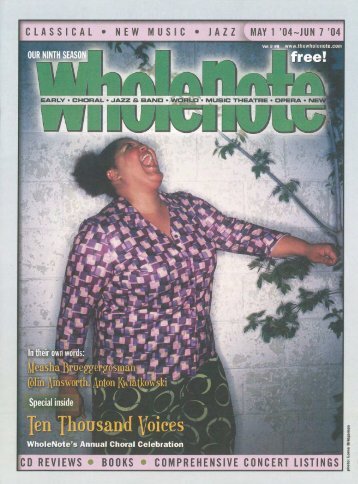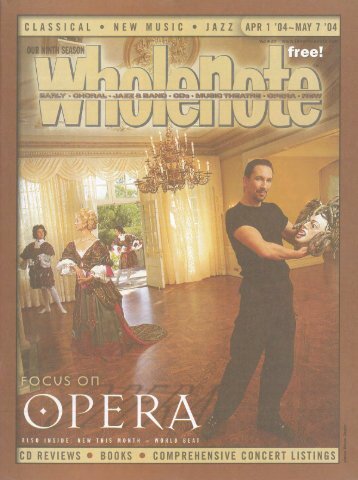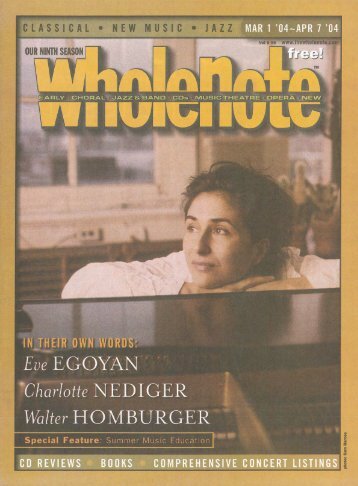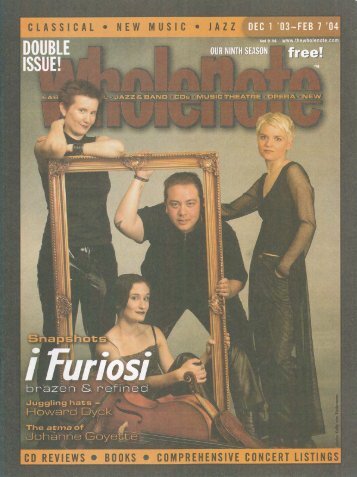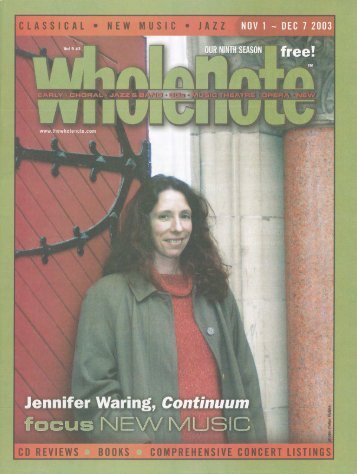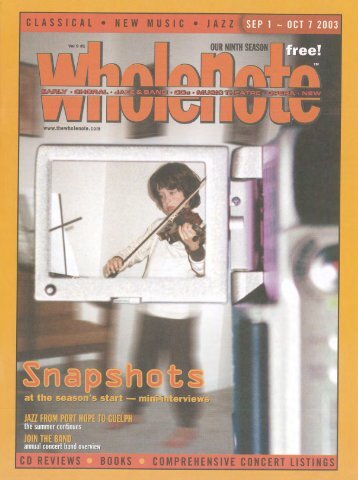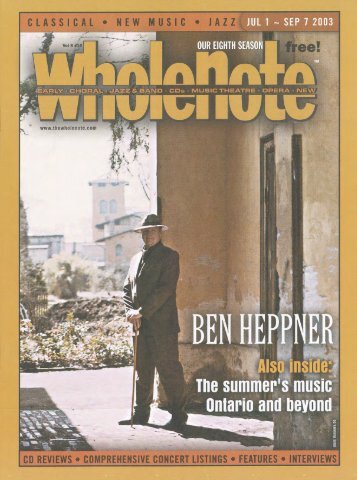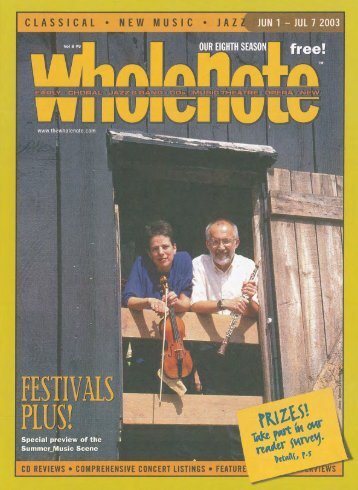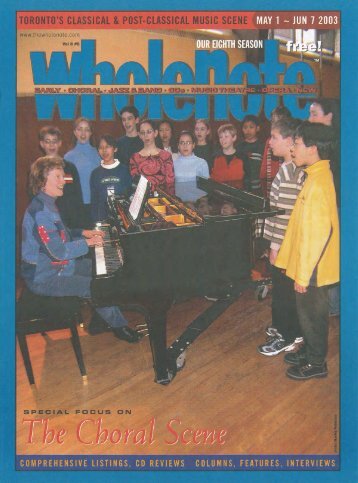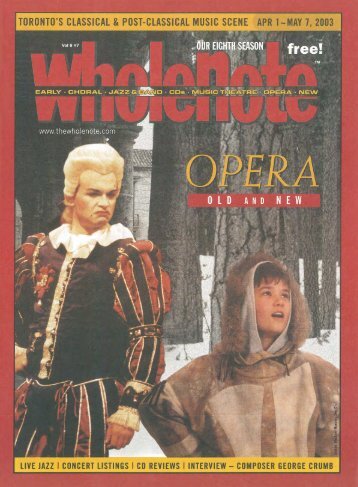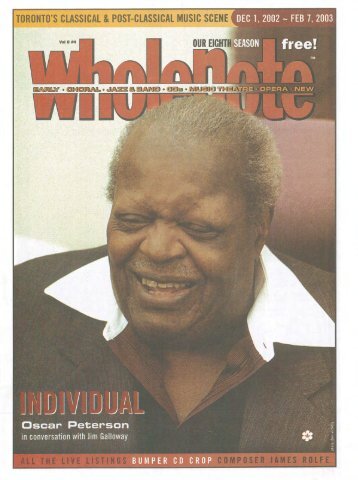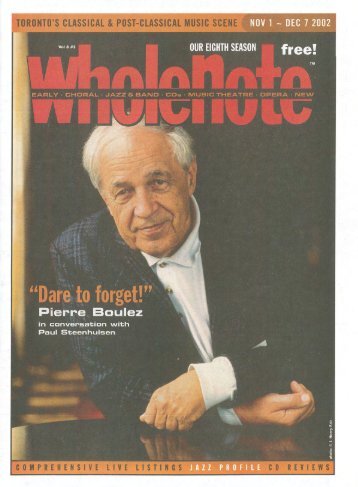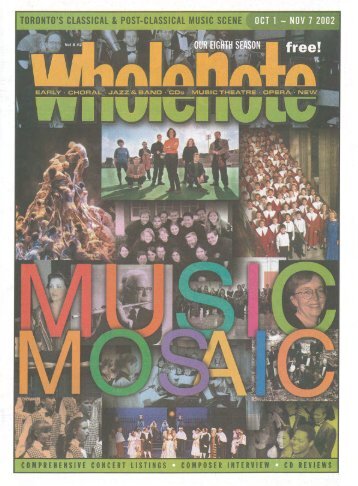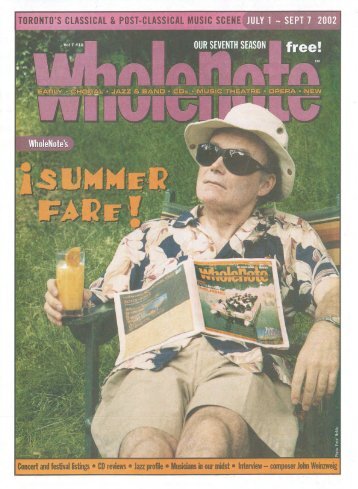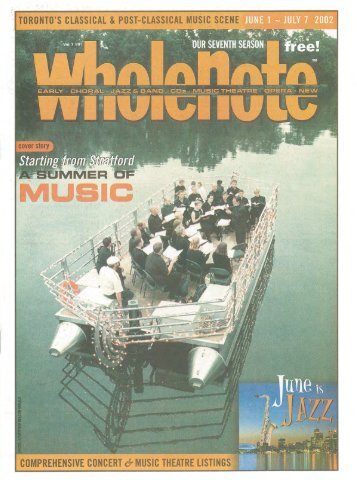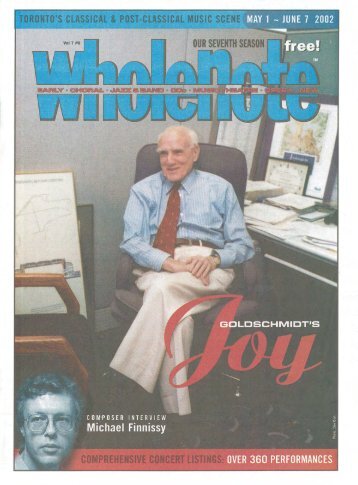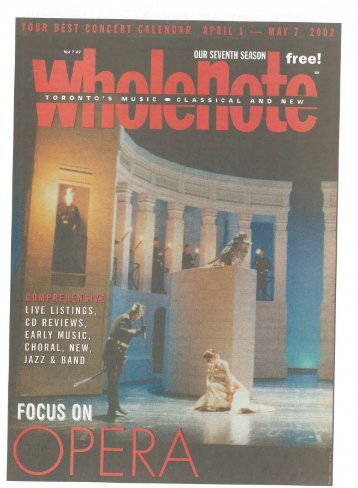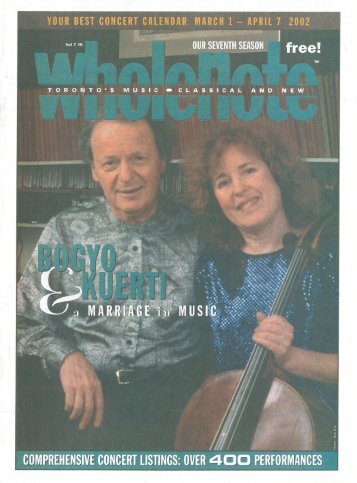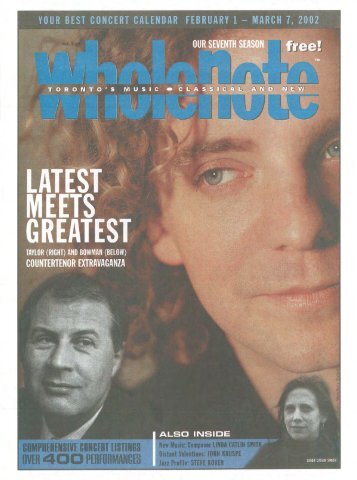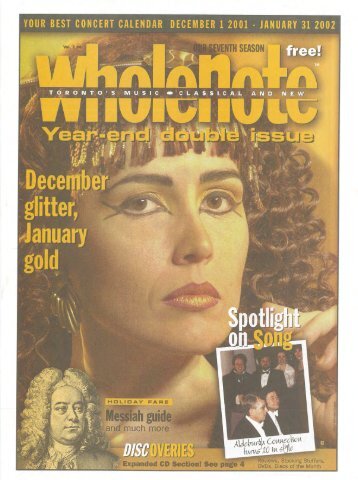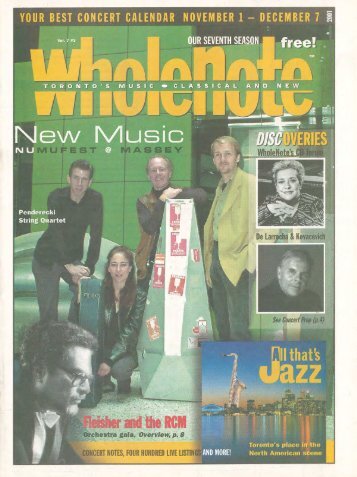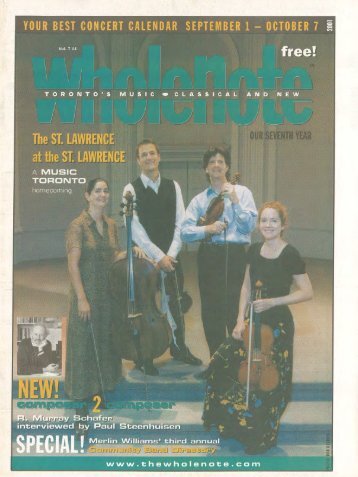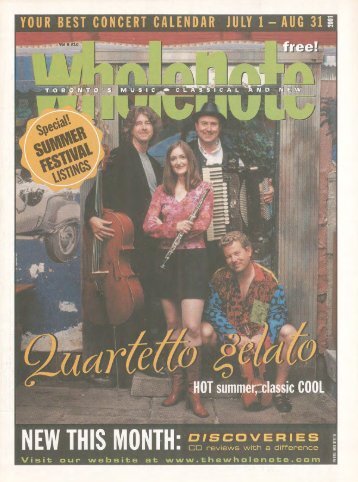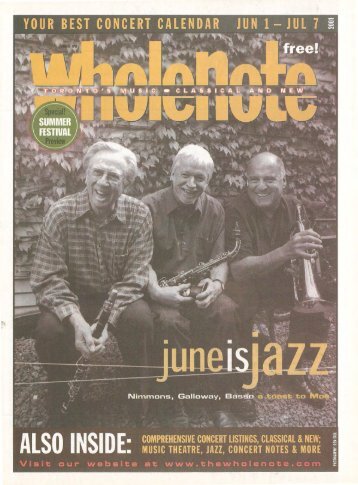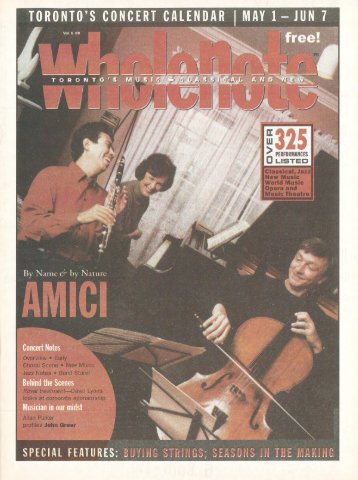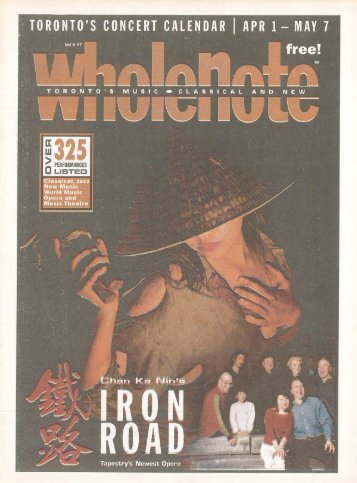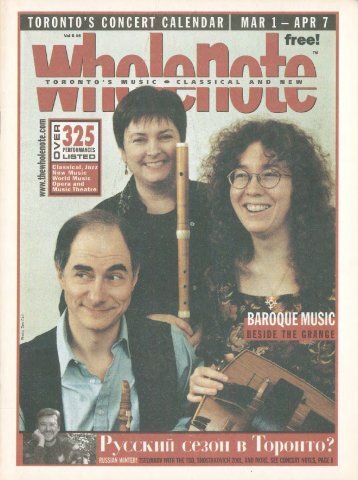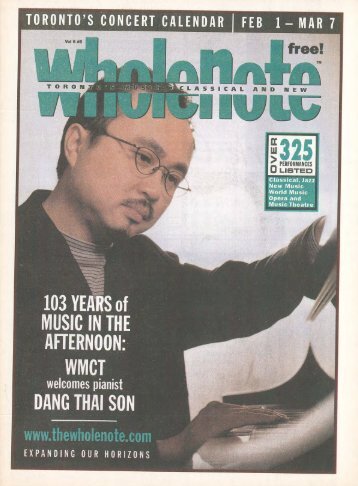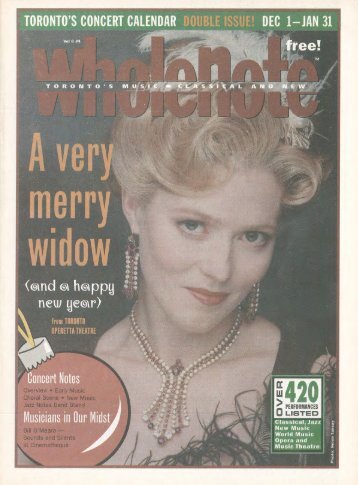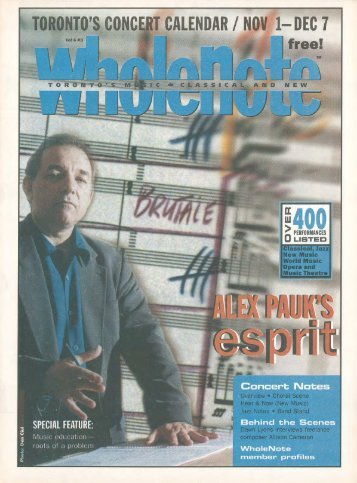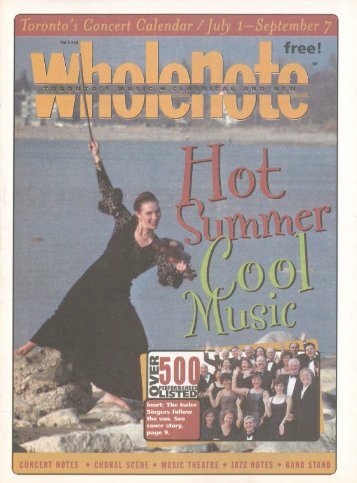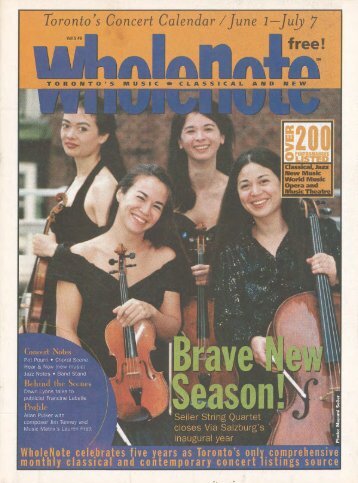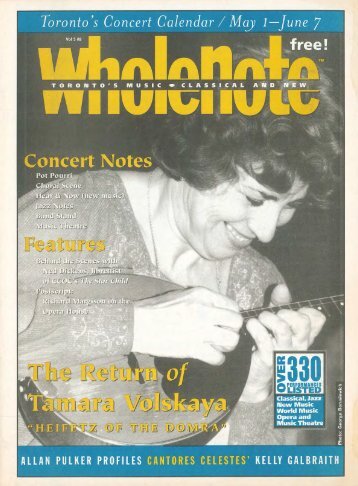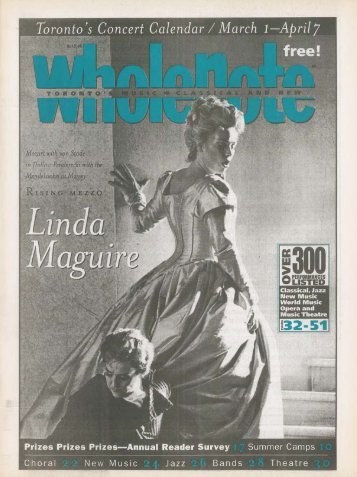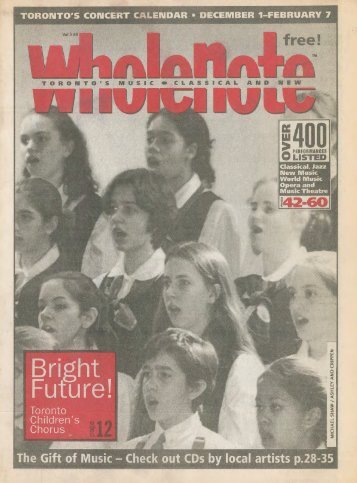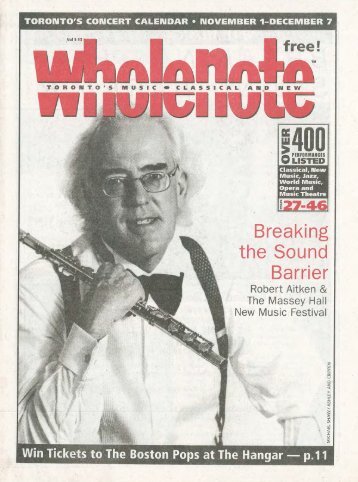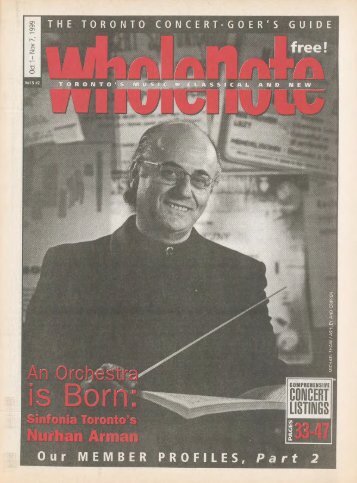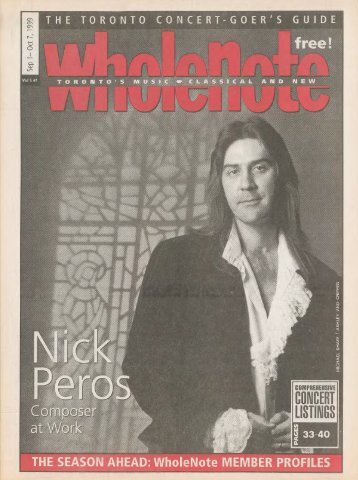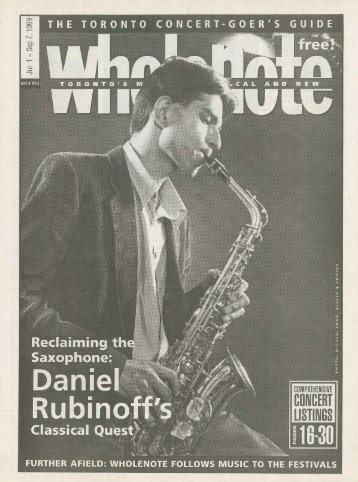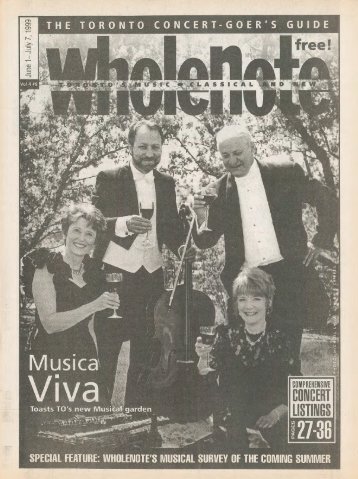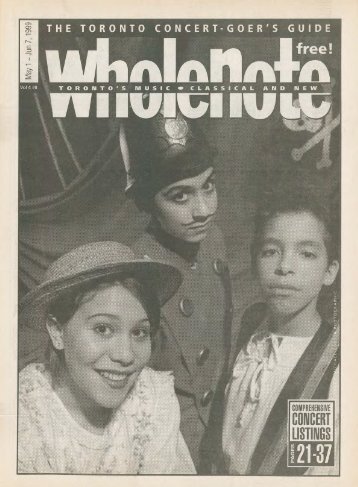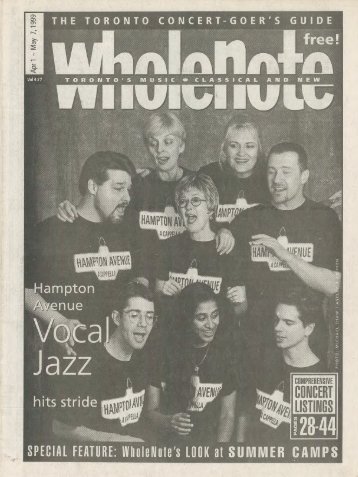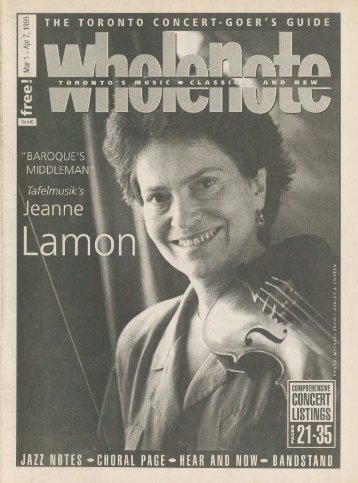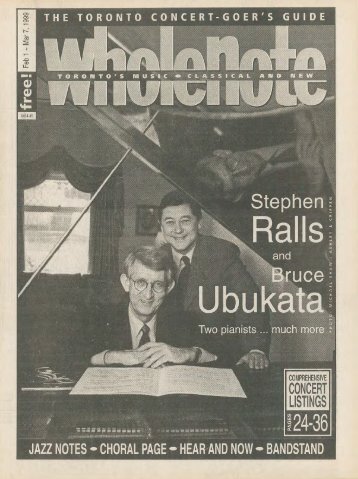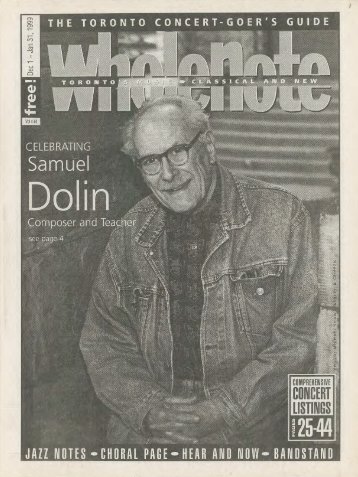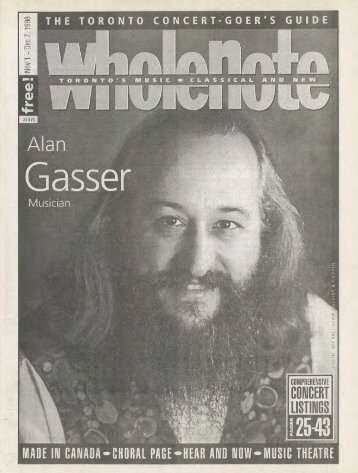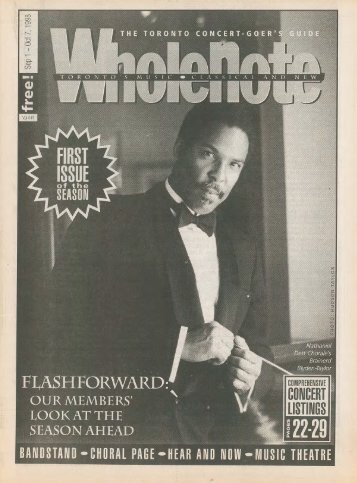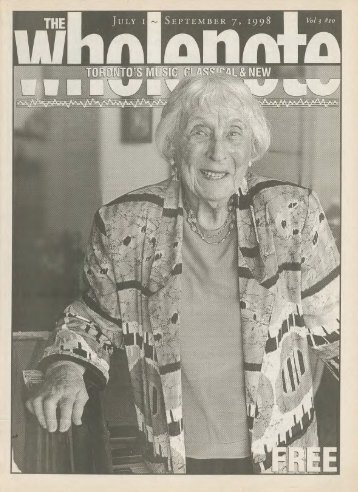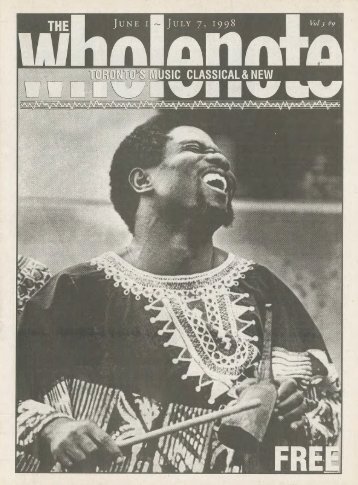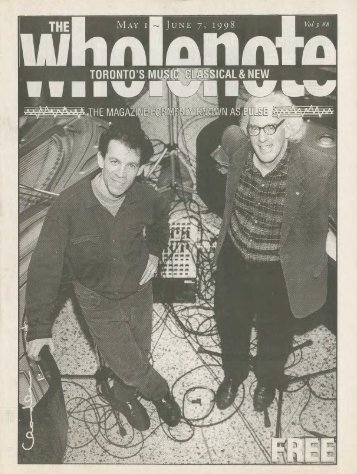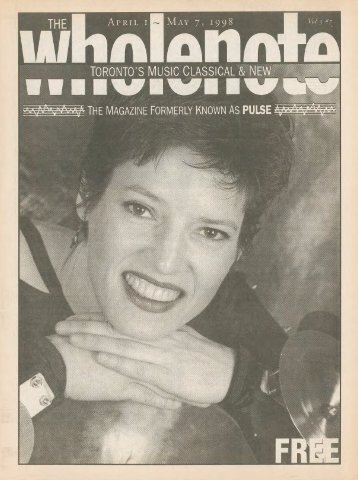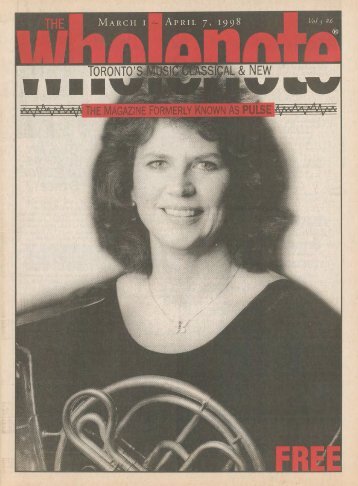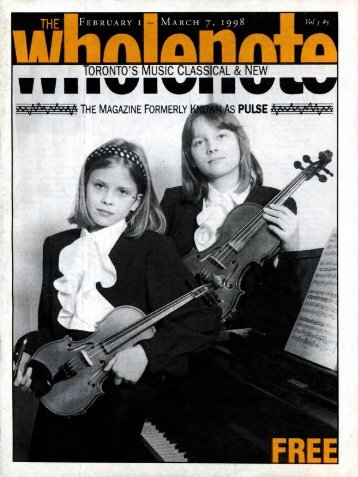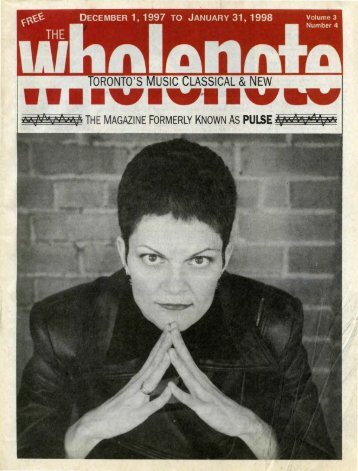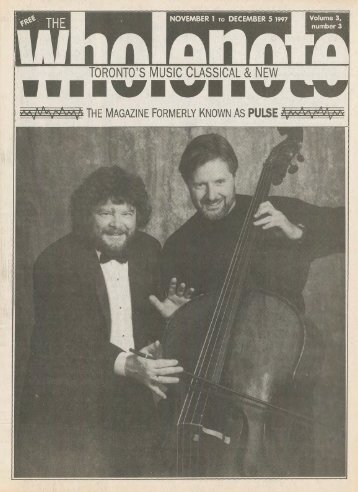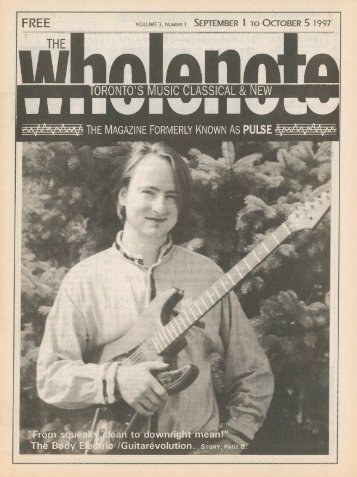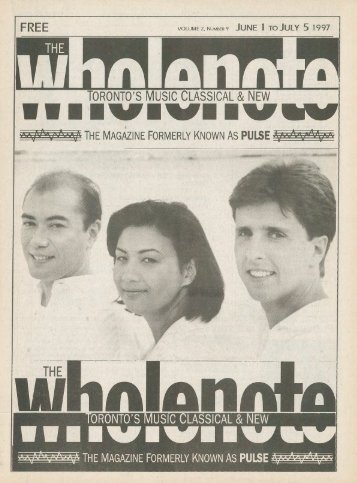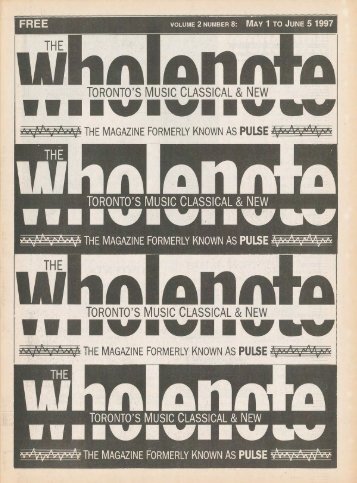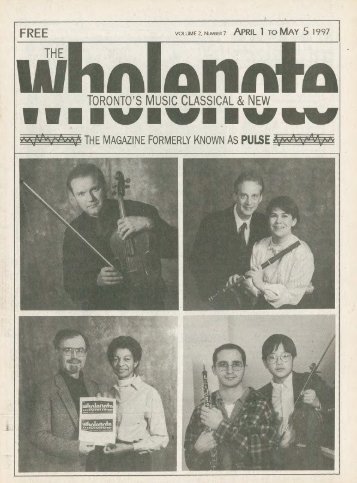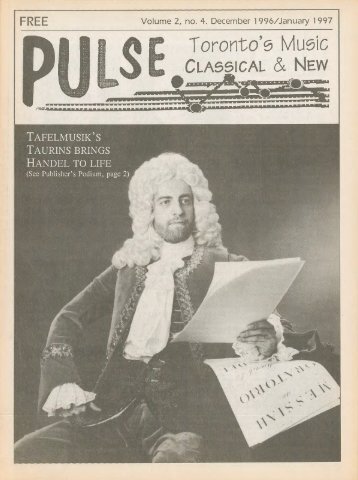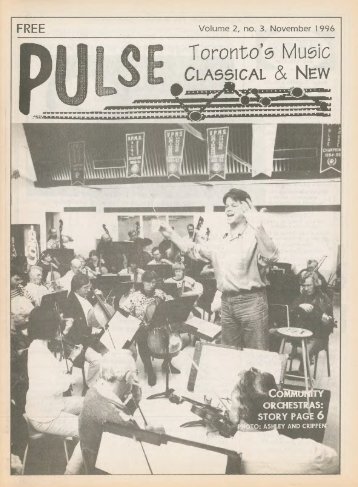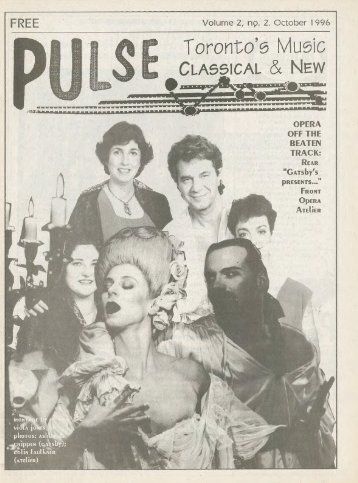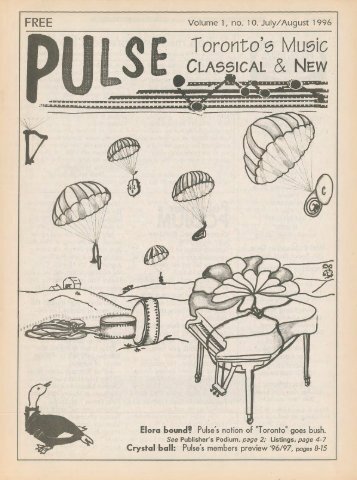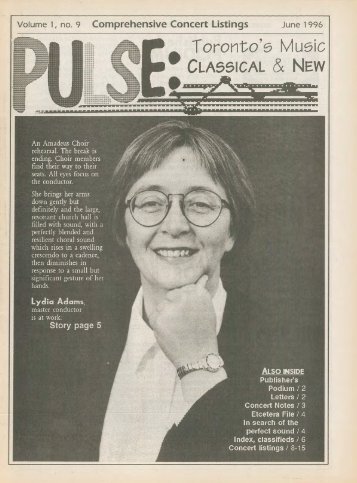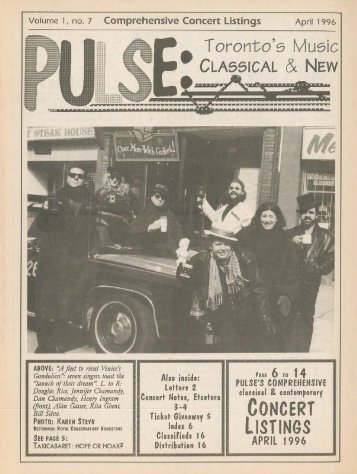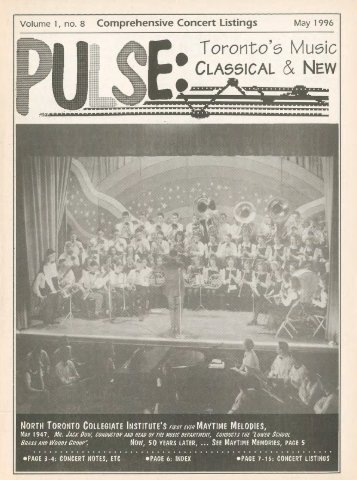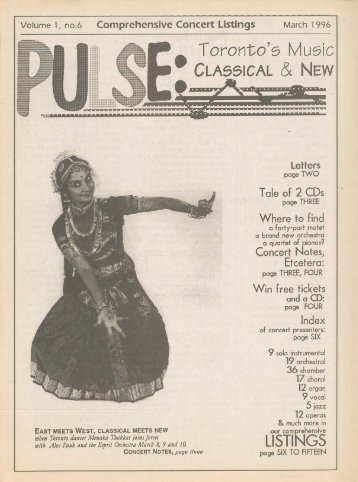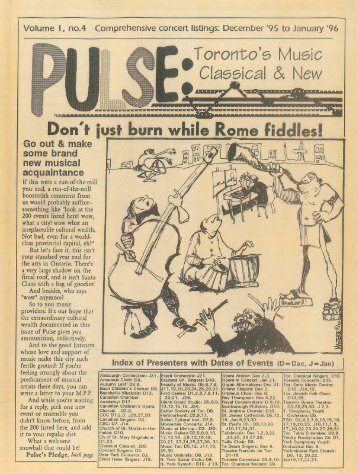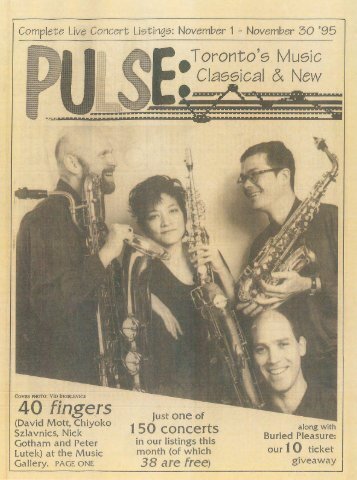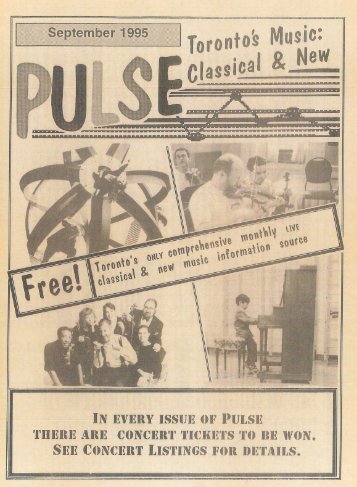Volume 19 Issue 5 - February 2014
- Text
- February
- Toronto
- Jazz
- Musical
- Symphony
- Violin
- Bloor
- Arts
- Theatre
- Concerto
at this year’s New
at this year’s New Creations Festival,the Toronto Symphony’s annual celebrationof contemporary orchestralworks running March 1 to 7. Each ofthe three pieces by featured composerJohn Adams engages in a conversationwith either political/social historyor the history of music. Renownedfor his post-minimalist style, Adams’music is full of contrasts and tendsJohn Adams to be more directional and climacticthan what we usually associate withminimalist music. His Doctor Atomic Symphony (March 1) is basedon orchestral music from his opera Doctor Atomic. With a librettocreated by Peter Sellars from a variety of sources (interviews, scientificmanuals and poetry), the story centres around the final hoursleading up to the first atomic bomb explosion at the Alamagordo testsite in New Mexico in June, 1945. The music conveys the epic struggleand moral dilemma surrounding the impact of the force about tobe unleashed into the world, which in hindsight, ushered in theatomic age.Adams’ two other works—Slonimsky’s Earbox (March 5) andAbsolute Jest (March 7)—are dialogues with some of the greatnames of musical history. Nicolas Slonimsky was a witty Russianauthor whose output included several books on music, including theThesaurus of Scales and Melodic Patterns. Adams makes use of thiscompendium of modes in his Earbox piece, which arose out of hisadmiration for another Russian creator—Igor Stravinsky—and theuse of modal scales in Stravinsky’s The Song of the Nightingale. Andfinally, Absolute Jest is an adaptation of the light and energetic stylefound in Beethoven’s late quartet scherzos composed as a concerto forstring quartet and orchestra. Expect to hear a warped sense of timeand harmony in this fast-paced dance.Three other works in the festival also engage in a conversationwith musical history. Canadian Vincent Ho’s City Suite (March 7) isinspired by author Eric Siblin’s book The Cello Suites which outlinesthe history of J.S. Bach’s works for solo cello. In Finnish composerand pianist Magnus Lindberg’s Piano Concerto No.2 (March 1), originallywritten for the virtuosic capabilities of festival guest performerYefim Bronfman, we witness his tussle with the complexity of pianistichistory. Former Los Angeles Philharmonic conductor Esa-PekkaSalonen took on a similar challenge during the composing of hisViolin Concerto (March 5). His solution was to create a deeplypersonal narrative summing up everything he had learned and experiencedin his life as a musician.More-than-Human Communication: And when it comes to theexchange of ideas, what could be more cutting edge (or to be morehistorically accurate, steeped in ancient traditions), than inter-speciescommunication? Back in the spring of 2013, the Music Gallery offeredaudiences an opportunity to listen to two recordings of humpbackwhale song in combination with electronics that had been releasedon their Music Gallery Editions label back in the 1970s. As a continuationof that initiative, the Gallery will be presenting an event onFebruary 22 that combines both lecture and music. Bioacousticsresearcher Katherine Payne will team up with recording artist DanielaGesundheit and a group of Toronto-based singers and instrumentaliststo create a unique sonic exchange with Payne’s recordings of humpbackwhales and African elephants.Improvisation: As mentioned in the opening paragraph, one of themajor trends I’ve noticed over the past year is the presence of improvisationas a force to contend with. Improvisation relies on cultivatinga listening presence, which is at the heart of all true communicationand dialogue. From February 21 to 23 at the Tranzac, the SomewhereThere Creative Music Festival offers a full schedule of concerts andlectures by performers and thinkers that reflect the vitality anddiversity of what’s happening on the improv scene in the Torontoarea. The two festival lectures reflect on the history of experimentalmusic in Canada and the roots of Toronto musical improvisation. Twoother improvisation-focused events this month include “The ArraySessions,” a concert of Toronto-based improvisers on February 6at the Arraymusic studio and the Music Gallery’s Jazz Avant eventFebruary 8 featuring the saxophone and electronic improvisations ofL.A. based musician Anenon.Additional Concerts:Feb. 6: A Soldier’s Tale - a dance theatre work with music by JohnGzowski, COC.Feb. 8: New works created for the Toy Piano Composers ensembleby Doelle, Dupuis, Murphy-King, Versluis, Taylor, Heliconian Hall.Feb. 13: ∆TENT New Music Ensemble presents works inspiredby remembrances of childhood by composers Tsurumoto andSoutham, CMC.Feb. 18: “Women in the Power House” – works by leading femalecomposers, COC.Feb. 19: Reverb Brass presents works by Ruo, Ridenour, Golijov,Carter, Maimets, Hillborg, Agnas, Lutoslawski, Gallery 345.Feb. 21: Thin Edge New Music Collective presents new works byAnna Pidgorna (for two violins and antique wooden door) and AnnaHöstman, along with performances of compositions by Ana Sokolovićand Brian Harman, Gallery 345.Mar. 2: Orpheus Choir presents the premiere of a new compositionby Charles Cozens entitled Tres Bailes Latinos, influencedby the composer’s relationship with Cuban musicians, GraceChurch-on-the-Hill.Wendalyn Bartley is a Toronto-based composer and electrovocalsound artist. sounddreaming@gmail.com18 | February 1, 2014 - March 7, 2014 thewholenote.com
Beat by Beat | Early MusicThe Long LostDAVID PODGORSKIDespite the fact that musicians are some of the most dedicatedof professionals, no one really pays sufficient attention to thefact that we are also incredibly strange. I mean it. Musicians aresome of the weirdest people you are ever likely to encounter socially,and I like to think it helps. Toronto hero Glenn Gould famously hadan obsessive fear of illness which drove him to dress in sweaters andcoats in mid-summer, and anequally obsessive desire to hearevery possible melody line in apiece of music which led him torecord some of the most originalrecordings of Bach of the 20thcentury. Obsessive behaviourcomes with the artistic territory –if you’re going to devote your life tomastering an instrument, a longdeadcomposer, or an artistic traditionthat’s been lost for severalhundred years, it kind of helps ifyou don’t worry about looking likea bit of a nut socially, or indeed nothaving much of a social life at all.Bud Roach: One Toronto-basedartist who has let his obsession run wild is Bud Roach, who to the bestof my knowledge possesses all of the social graces one needs (like Iwould know), but is nevertheless very, very dedicated to Italian vocalmusic circa 1600. I caught up with Roach one evening in January toWorkshopping Dafne with members of Capella Intimaand Continuo Collective; Bud Roach, front leftdiscuss his next concert with Capella Intima, a re-creation of Marcoda Gagliano’s Dafne, which ranked as one of the most avant-gardemusical art works of its time when it was premiered in 1608. Dafne,you see, was written in a musical form that da Gagliano’s Italiancontemporaries couldn’t understand, and they called the work afavola in musica (a musical fable). Later generations of Italians, likemusic-lovers elsewhere in Europe, would later find a new name forthis sung fable: an opera.“Marco da Gagliano has all the traits of a composer of the Florentinecamerata,” Roach explains, referencing the artistic movement thatadvocated for a new, dramatic form of vocal music in 17th-centuryItaly. “His music has long, singing recitatives and focuses on emphasizingthe text. His music is really as much about poetry as it isabout singing.” Dafne was oneof the first operas ever written,but da Gagliano didn’t takethat particular prize: he wasbeaten out by Jacopo Peri, whowrote Eurydice just eight yearsearlier in 1600.Roach founded Capella Intimamainly to perform early-17th-centuryItalian music, and whileToronto audiences may be familiarwith the major works of the timeand place (think Monteverdi’sVespers and Orfeo), Roach arguesthat there were lots of equallyvalid composers from that timewho have been unjustly forgottenby contemparary audiences. When I ask him why Toronto concertgoersshould care about early opera, he goes straight to the point. “Thebeginnings of Western classical music were in 1600. Anyone whosubscribes to the COC should know Dafne, and Monteverdi and hisCA|n IVAL|e VELSFrom Epiphany to Mardi Gras, the streets of RenaissanceItaly resounded with the outrageous and intoxicatingsongs of Carnival, as long nights were chased away withdisguisings, revelry and feasting. With special guest,Gabrielle Houle, mask-maker and performance artist.FRI., FEBRUARY 28 & SAT., MARCH 1, 8PMTrinity-St. Paul’s Centre, 427 Bloor St. WestTICKETS $19 - • CALL 416-964-6337ONLINE AT TORONTOCONSORT.ORGthewholenote.com February 1, 2014 - March 7, 2014 | 19
- Page 2 and 3: Baroque Orchestra and Chamber Choir
- Page 4 and 5: 2013-14 Concert SeasonKOERNER HALL
- Page 6 and 7: FOR OPENERS | DAVID PERLMANMore rea
- Page 8 and 9: Music and the MoviesVisitors: A Col
- Page 10 and 11: Toronto’s Musical Avant-Gardist:U
- Page 12 and 13: Beat by Beat | Choral SceneBack The
- Page 14 and 15: have a future chance to engage with
- Page 16 and 17: he writes for The Telegraph, where
- Page 20 and 21: contemporaries,” he says. Capella
- Page 22 and 23: !!Opera Quick PicksWith 2014/15 sea
- Page 24 and 25: Beat by Beat | World ViewHappy (Chi
- Page 26 and 27: David Braid, piano, andMatt Brubeck
- Page 28 and 29: The WholeNote listings are arranged
- Page 30 and 31: Feb 1(2:00); Also Feb 5, 6, 7, 8(8p
- Page 32 and 33: Tuesday February 11●●12:00_noon
- Page 34 and 35: Release. New works inspired by Pers
- Page 36 and 37: Hymns from Oscar-winning films, wit
- Page 38 and 39: Friday February 28●●1:10: Gordo
- Page 40 and 41: Weekly organ recital: David Briggs.
- Page 42 and 43: Schroeder and Keiko Tokunaga, violi
- Page 44 and 45: and would we be allowed regular Sat
- Page 46 and 47: Eisenman Trio . Feb 9 12:30pm Yo
- Page 48 and 49: and ballads. Mark Bell, song leader
- Page 50 and 51: Beaches Children’s Chorus, locate
- Page 52 and 53: for solo piano, Prélude (2006) and
- Page 54 and 55: easily identifiable harmonies and d
- Page 56 and 57: Gold medalist Kholodenko chose an e
- Page 58 and 59: MODERN AND CONTEMPORARYRosenthal -
- Page 60 and 61: Coleman, Sonny Rollins and Jimmy Gi
- Page 62 and 63: Ladom. Their tight chamber sensibil
- Page 64: SEASON PRESENTING SPONSOR10th Annua
Inappropriate
Loading...
Mail this publication
Loading...
Embed
Loading...

